Today's extreme CPUs are a taste of the future
The Threadripper 3970X has so many cores, Far Cry 5 doesn't know what to do.

My name is Jarred, and I have a problem: I'm addicted to extreme hardware. Show me the latest shiny new tech and I can't help but feel giddy. Today might be too much for my aging body to handle, as I'm confronted with not just one new piece of extreme hardware, but three new processors all vying for the crown of the best CPU (but not for gaming). It's a throwdown in the high-end desktop (HEDT) arena, with many of the fastest benchmark results I've ever seen.
First up is the Intel Core i9-10980XE (aka, Cascade Lake-X, or CLX) running on an Intel X299 motherboard, which for me is the least exciting of the three—not that it's bad, but it's not that different from the previous generation Core i9-9980XE. The main changes involve slightly higher boost clocks, and the addition of Intel's new DL Boost instructions. The former should improve performance in all tasks, while the latter will require applications specifically programmed to use the new instructions—typically for the artificial intelligence or deep learning markets.
It's like peering into a crystal ball and trying to imagine what mainstream PC hardware might look like in another five years
Joining Intel's new CLX CPUs are AMD's third generation Threadripper 3960X and 3970X. The 3960X is a 24-core/48-thread part, while the 3970 boasts a 32-core/64-thread implementation using AMD's latest Zen 2 cores. Intel's Core i9-9900KS is great if you're looking to build the ultimate gaming PC, and the Ryzen 9 3950X and i9-10980XE straddle the line between gaming and content creation. The new Threadripper CPUs meanwhile pole vault right over the line and almost feel like science fiction. It's like peering into a crystal ball and trying to imagine what mainstream PC hardware might look like in another five years.
Recently, I've been putting the latest and greatest AMD and Intel CPUs through the wringer. That started with Intel's Core i9-9900KS, a limited edition 8-core part that cranks the all-core turbo clocks to 5.0GHz. Next came AMD's Ryzen 9 3950X, a 16-core/32-thread behemoth that runs in the same socket AM4 motherboards as other Ryzen processors. But now it's time to throw caution to the wind and power up some HEDT systems that can legitimately pull 600W of power from the outlet—efficiency be damned!

That's always been the case with high-end desktop. Intel's 6-core Core i7-980X debuted nearly a decade ago in early 2010, when most high-end PCs were dual-core parts, and even extreme PCs were using 4-core parts. It preceded Intel's first mainstream 6-core CPU, the Core i7-8700K, by about eight years. It was nominally a 130W part, but enthusiasts routinely overclocked it to the point where it could draw over 200W.
What's it like to use these extreme performance CPUs? At times, it's mind-blowing, but I also want it to be clear that no gaming enthusiast should be looking at these parts as the 'best' solution for an extreme gaming rig. Besides the difference in price, the reality is that few games know what to do with this many cores and threads, and some end up stumbling. A Ryzen 9 3900X or Core i9-9900K/9900KS is a far less costly and far more sensible solution that should still let you get your game on for the next five years.
But not everyone that plays games only uses their PC to play games. Anyone dabbling in software development, 3D rendering, livestreaming, video editing, or some other field may have reason to consider moving to an HEDT platform. Do you want more cores? With an HEDT platform, it's possible to get over twice as many cores as a mainstream CPU. Frankly, it's impressive to fire up an application like Cinebench or Blender and watch all the little boxes fill in.
Keep up to date with the most important stories and the best deals, as picked by the PC Gamer team.
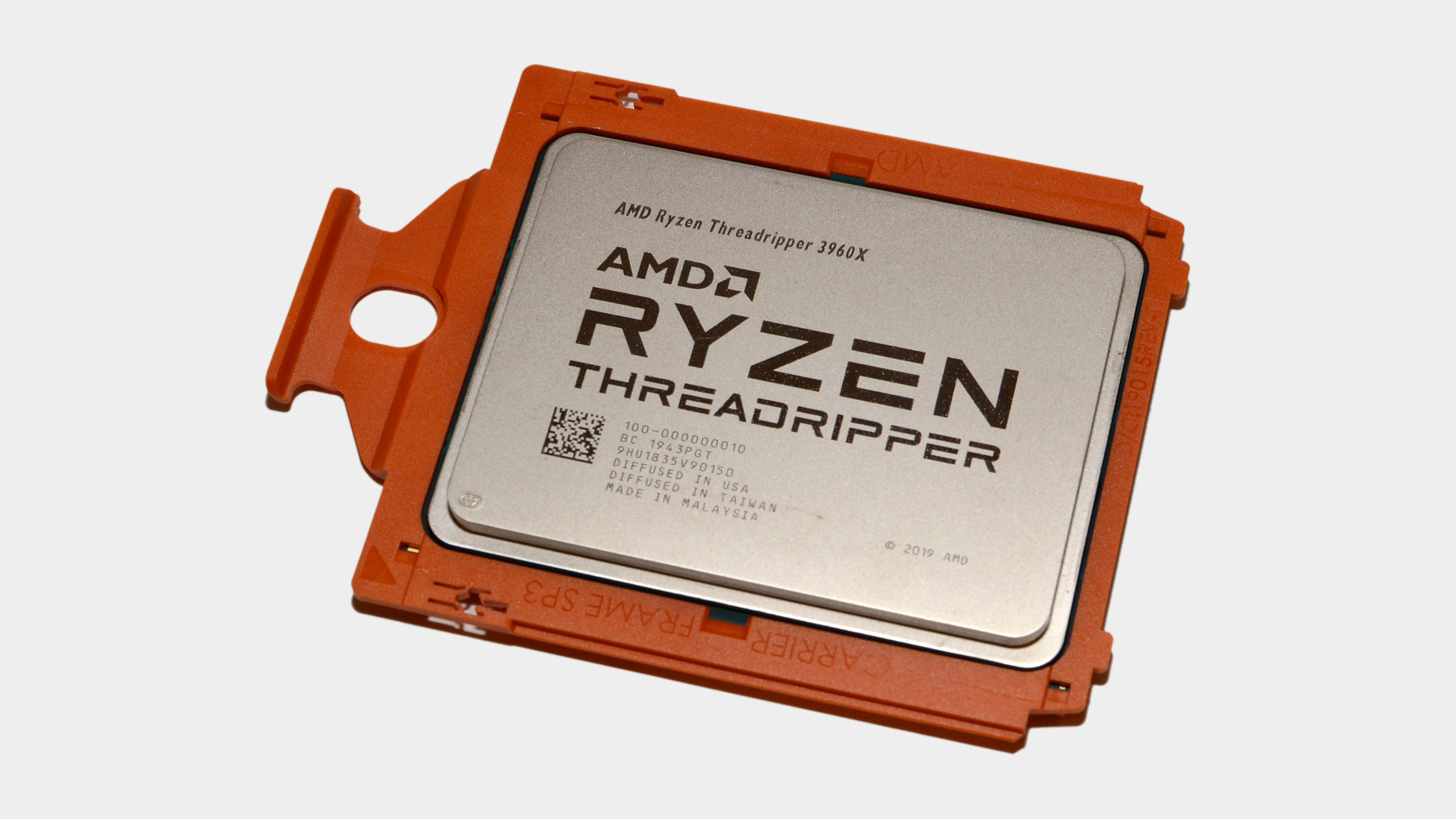
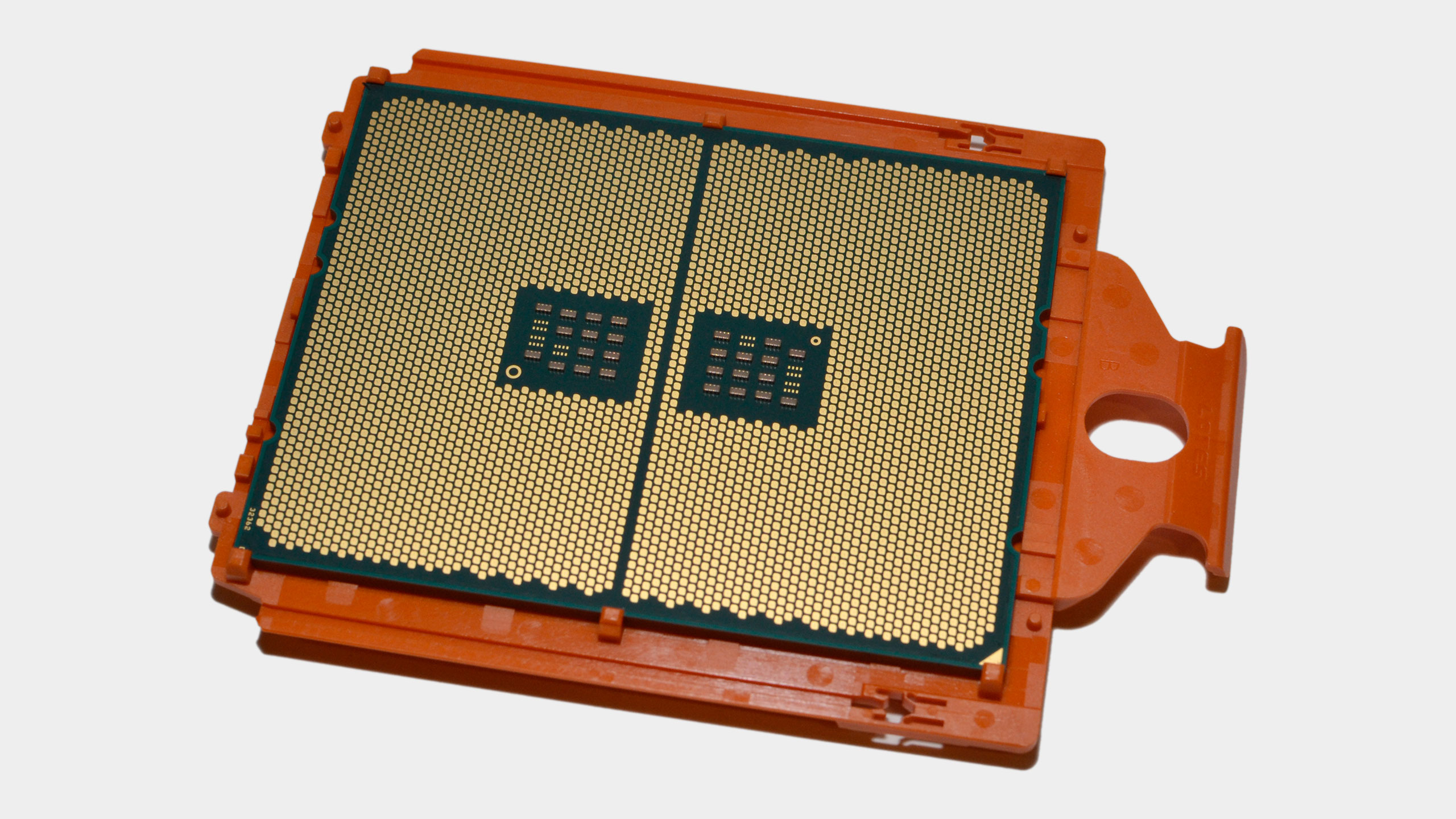
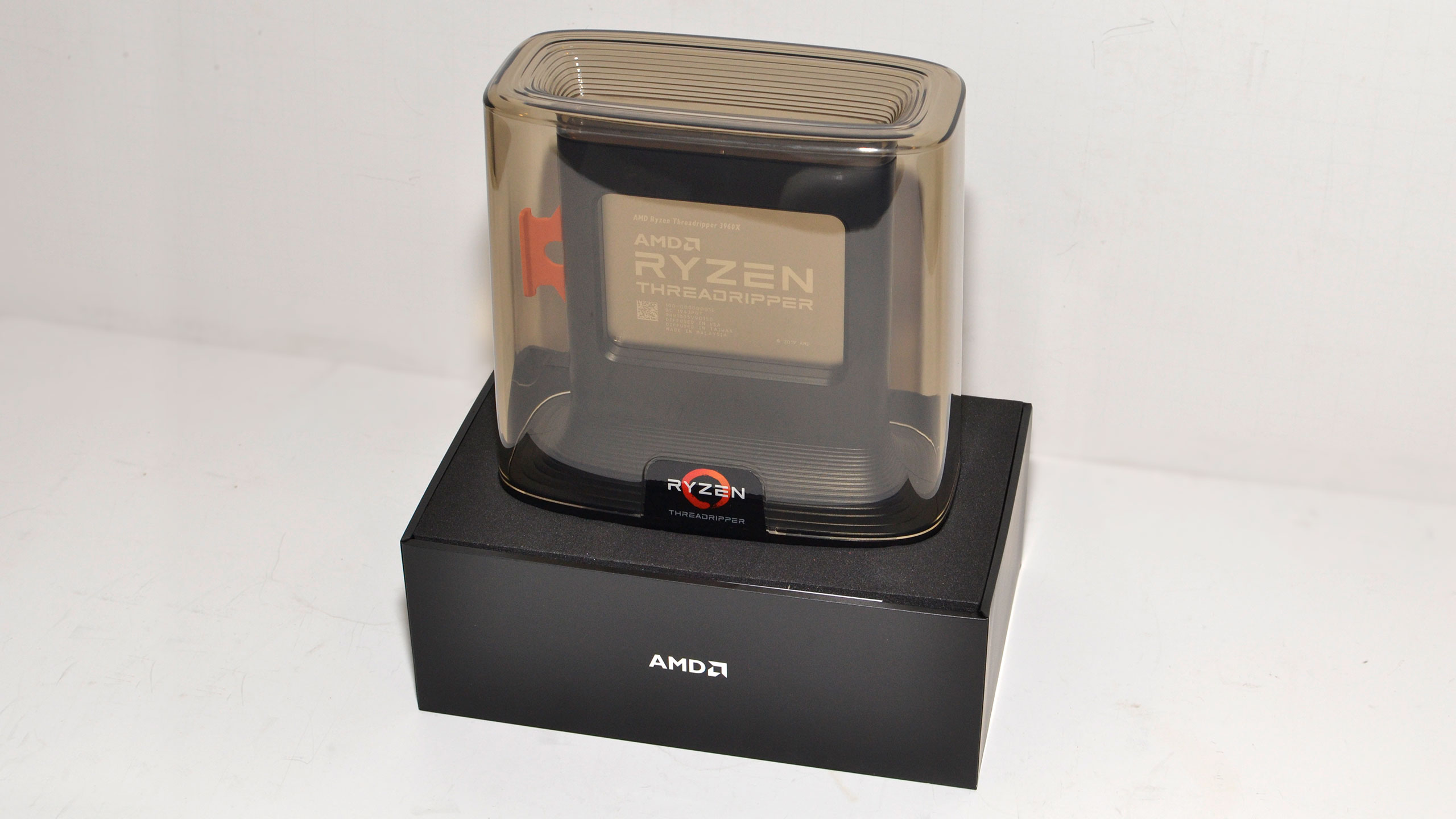
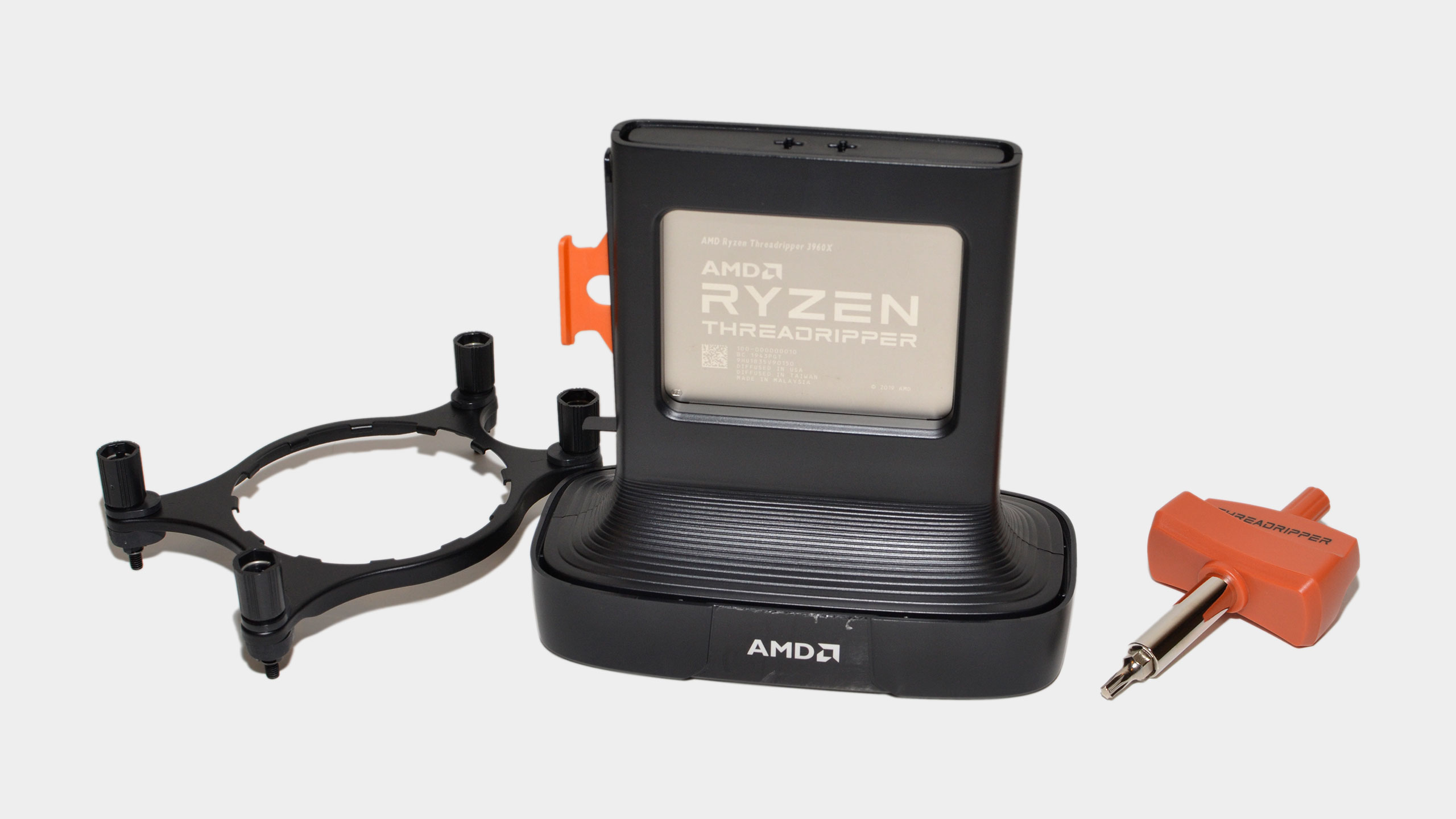
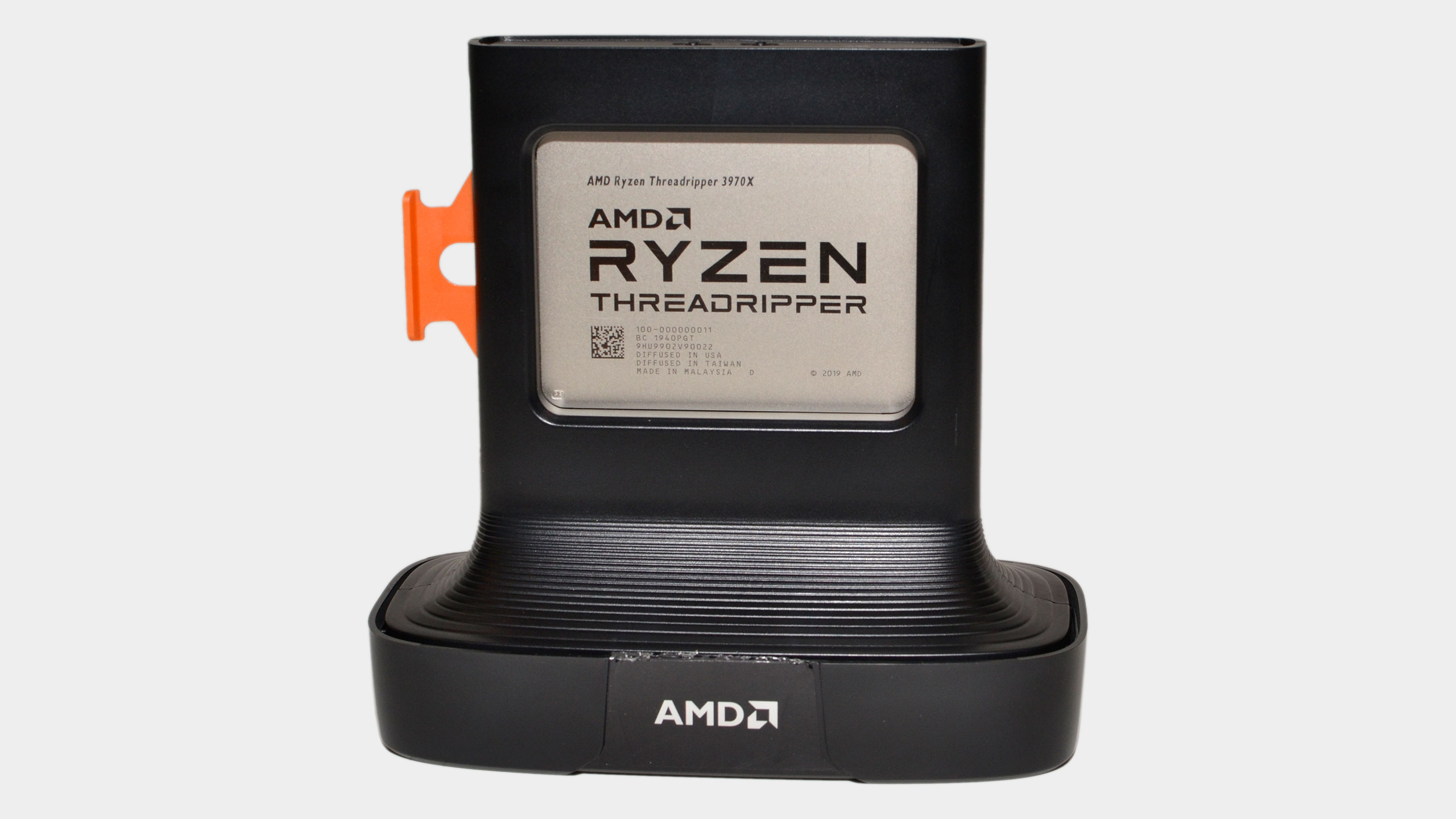


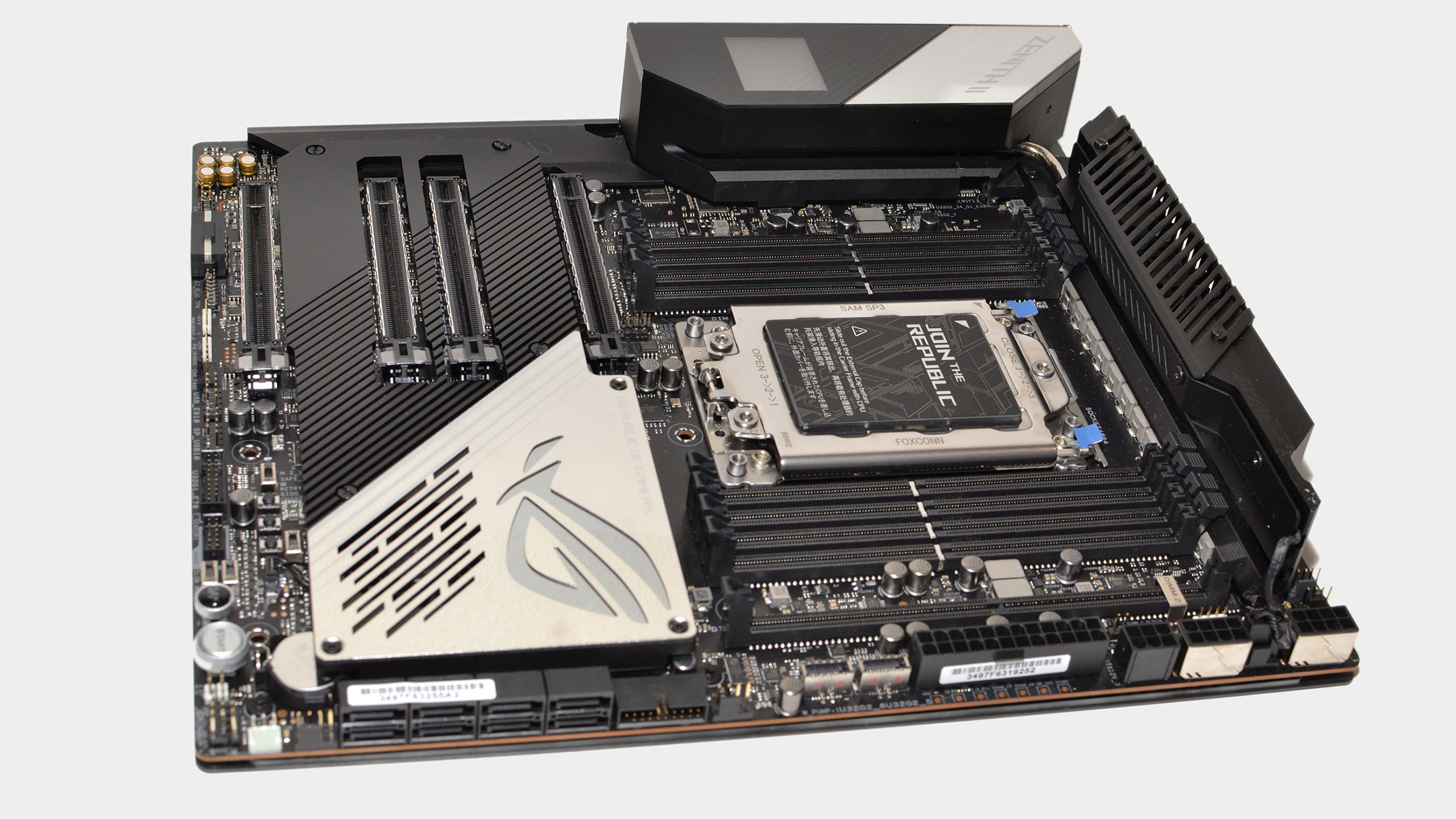
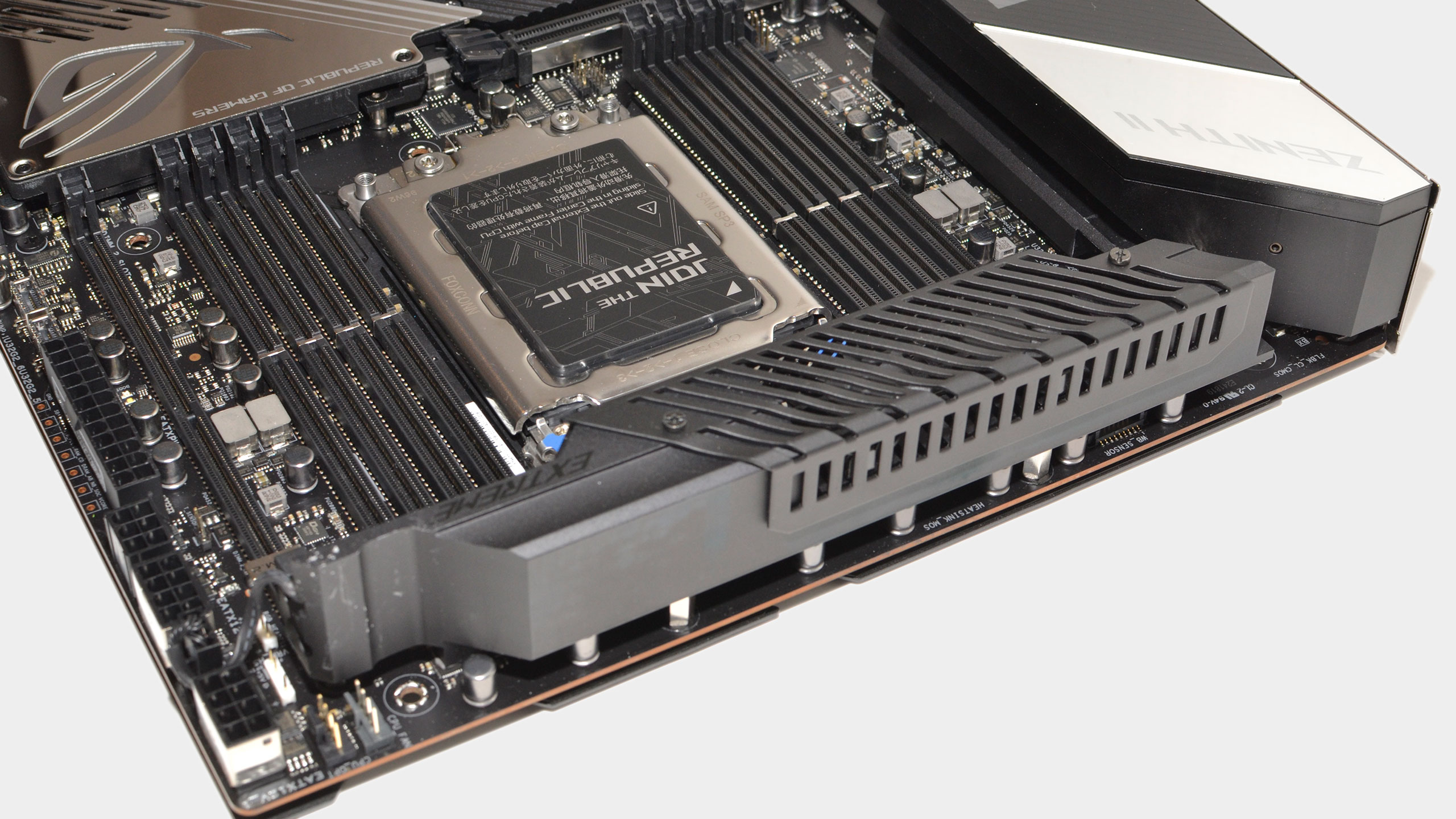
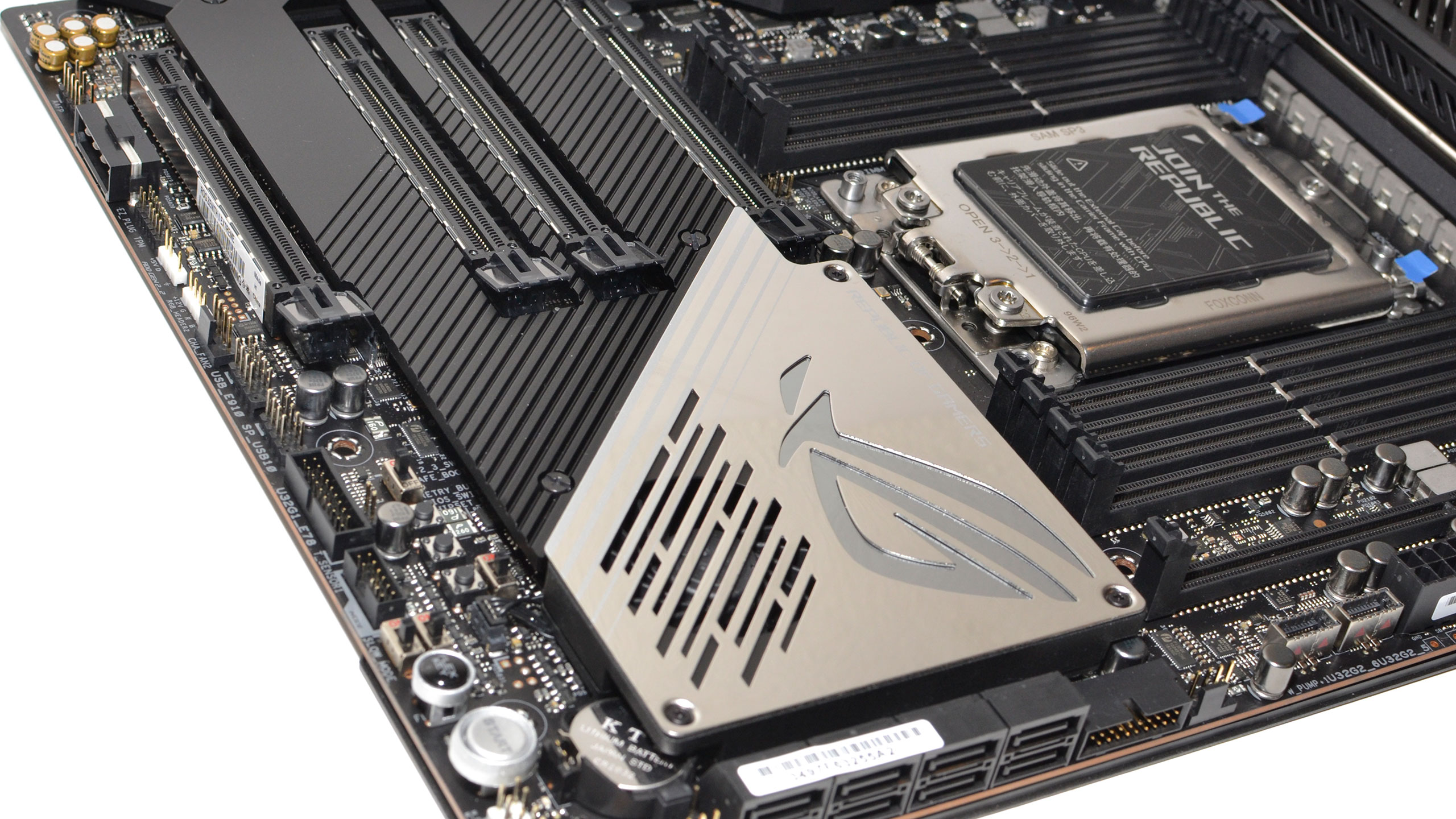
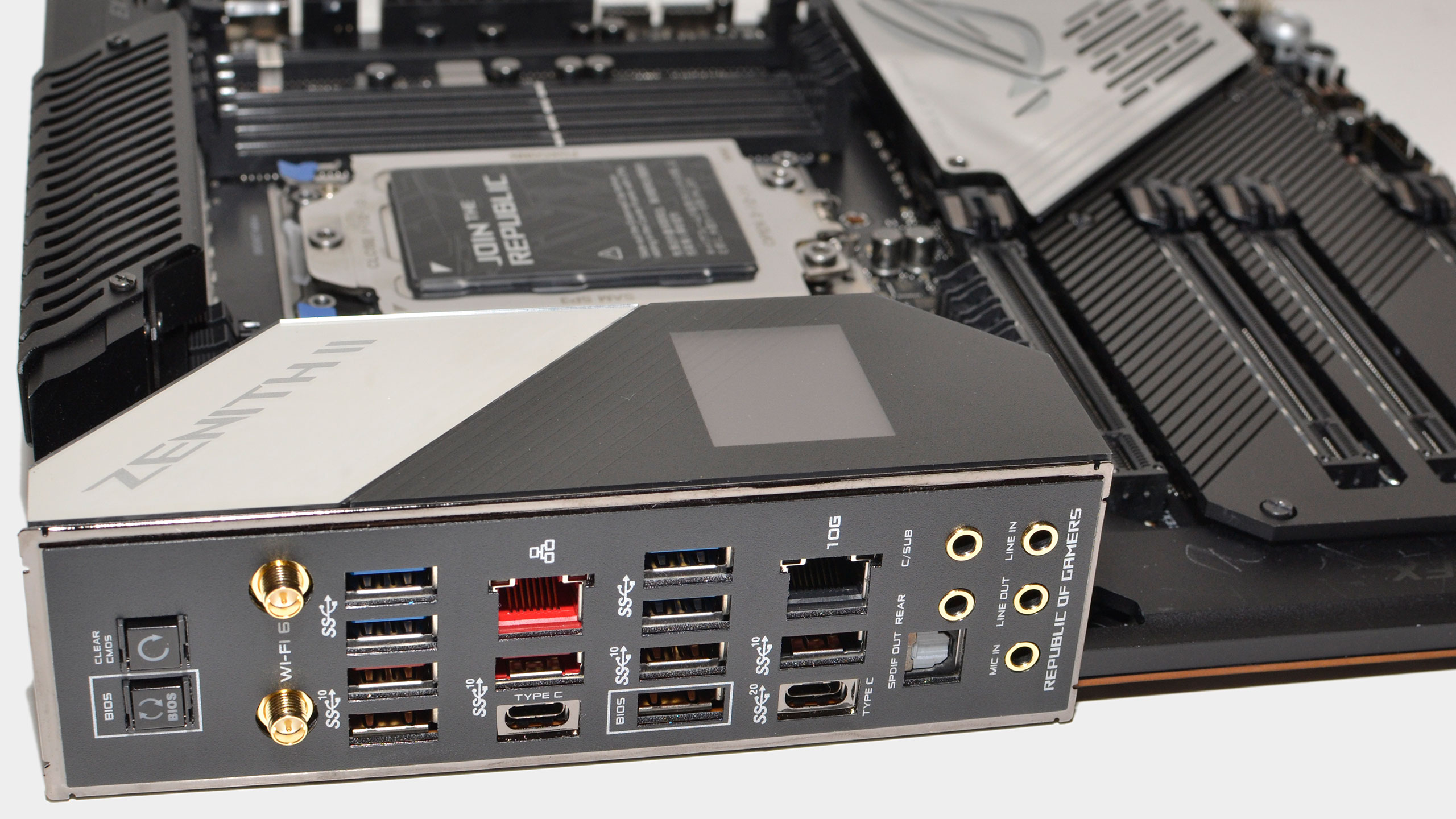
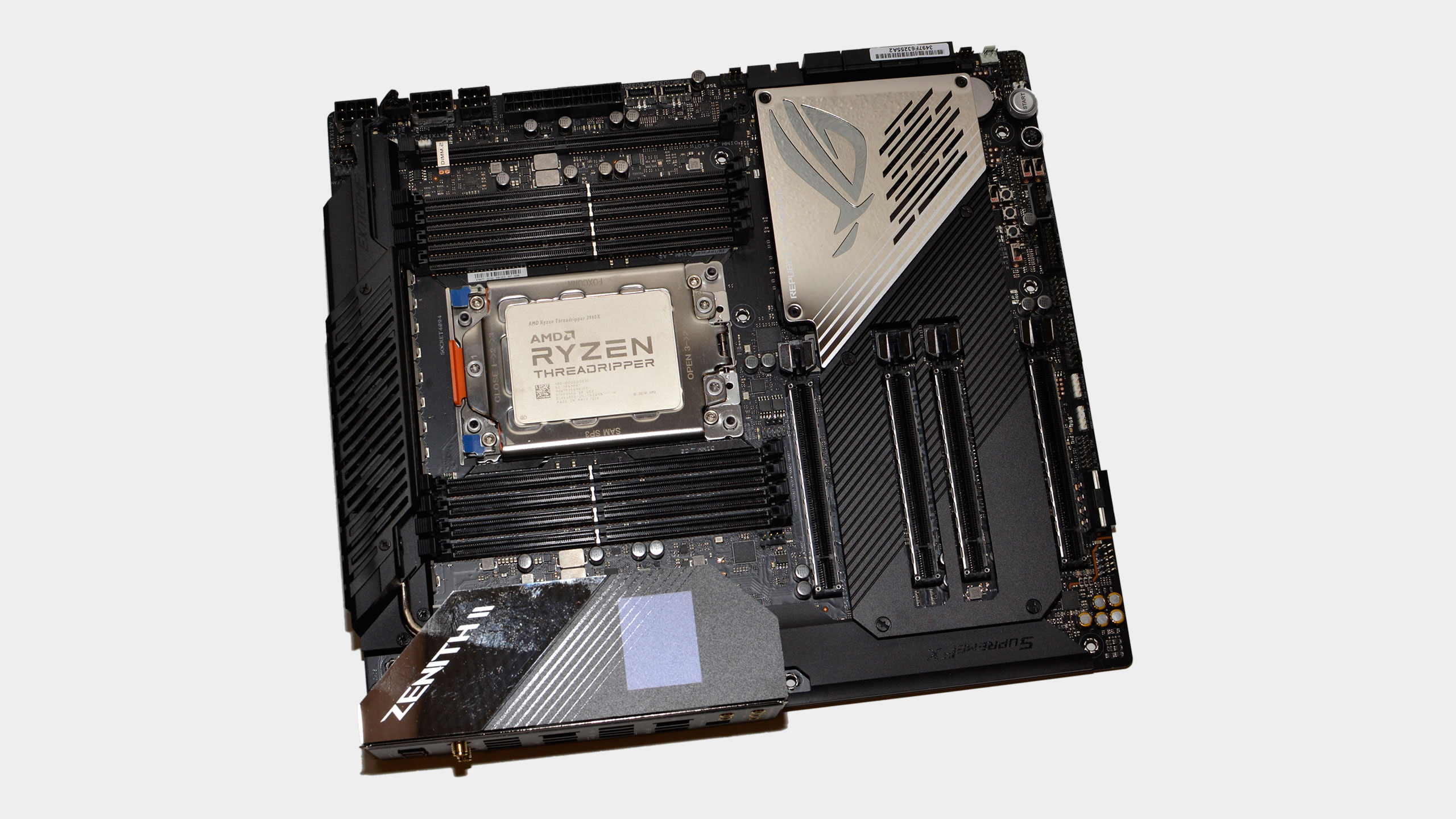
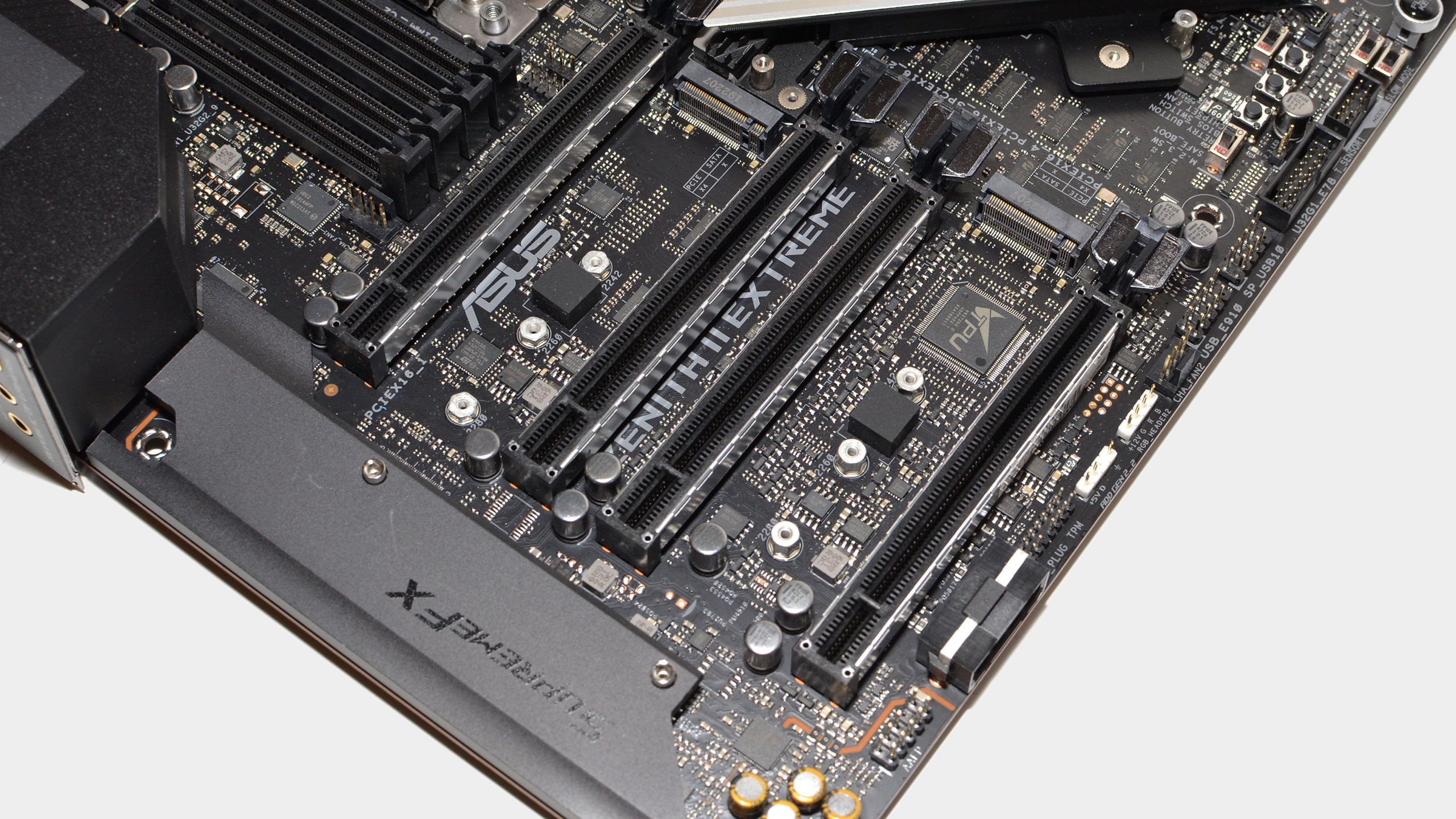
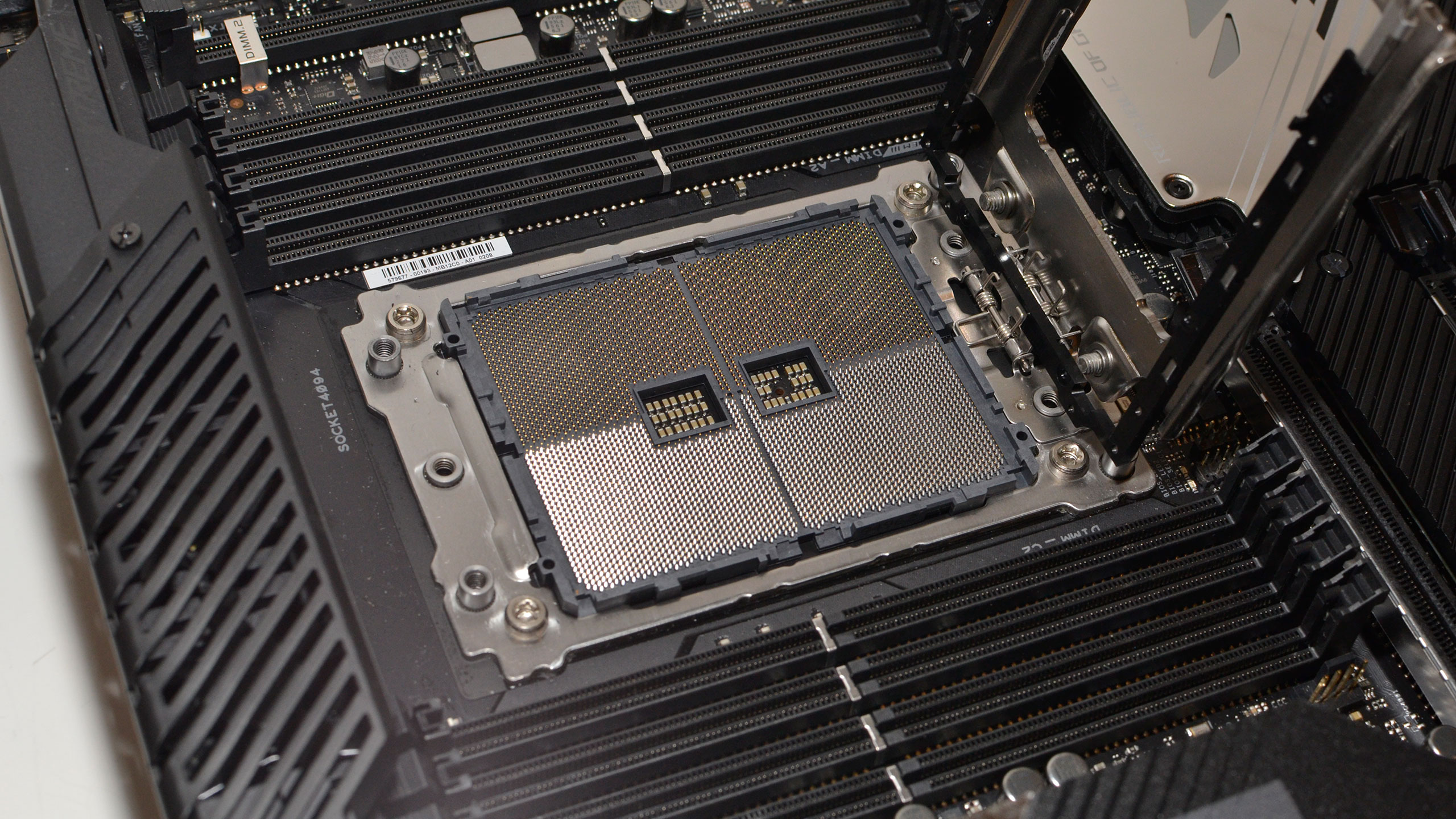
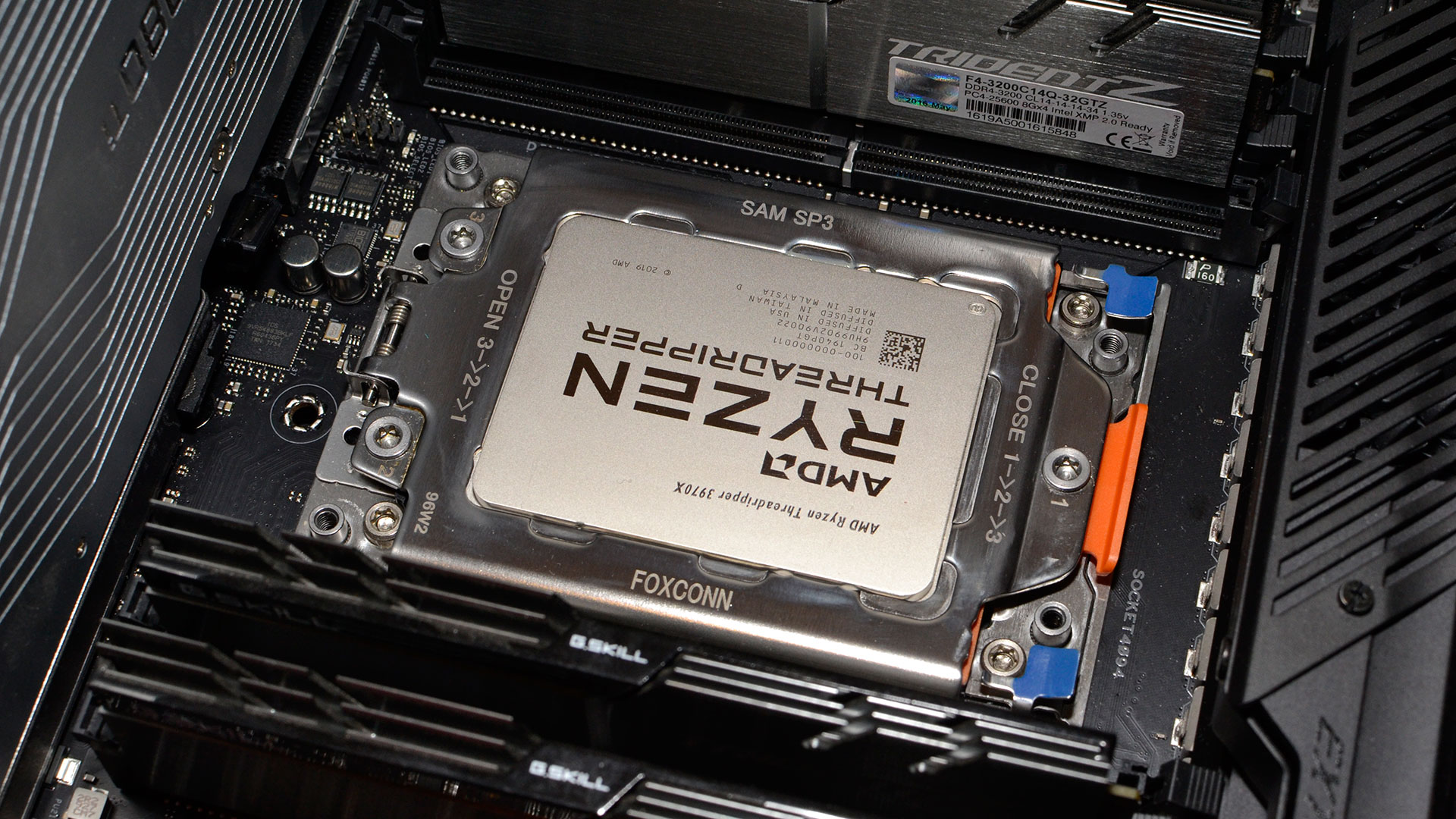

Meet the heavyweight HEDT contenders
AMD and Intel have different takes on how to build the most powerful CPUs possible. Intel continues to use a single monolithic chip that has everything needed to talk to memory, run calculations, cache data, etc. AMD's latest approach is more modular. Inside the latest Threadripper and Ryzen CPU packages, there are now multiple 'chiplets.' The CPU chiplets contain two core complexes (aka, CCX) with four cores each and up to eight cores per chiplet, while the IO chiplet hosts all the logic for communicating with DDR4 memory, PCIe devices, USB ports, and more.
The key is that AMD can put multiple CPU chiplets into a single package—up to two chiplets (16 CPU cores) for Ryzen 3000 CPUs, or eight chiplets (64 cores) with Threadripper 3000. Yes, AMD is planning on releasing a 64-core/128-thread 3990X in 2020.
Third generation Threadripper also ditches backward compatibility to improve scaling and performance. By moving the memory controller into the IO chiplet, memory access speeds should be more uniform. AMD also links the CPU package and chipset with a PCIe x8 connection, and upgrades the interface to PCIe Gen4, giving it four times the bandwidth between the CPU and chipset compared to earlier CPUs.



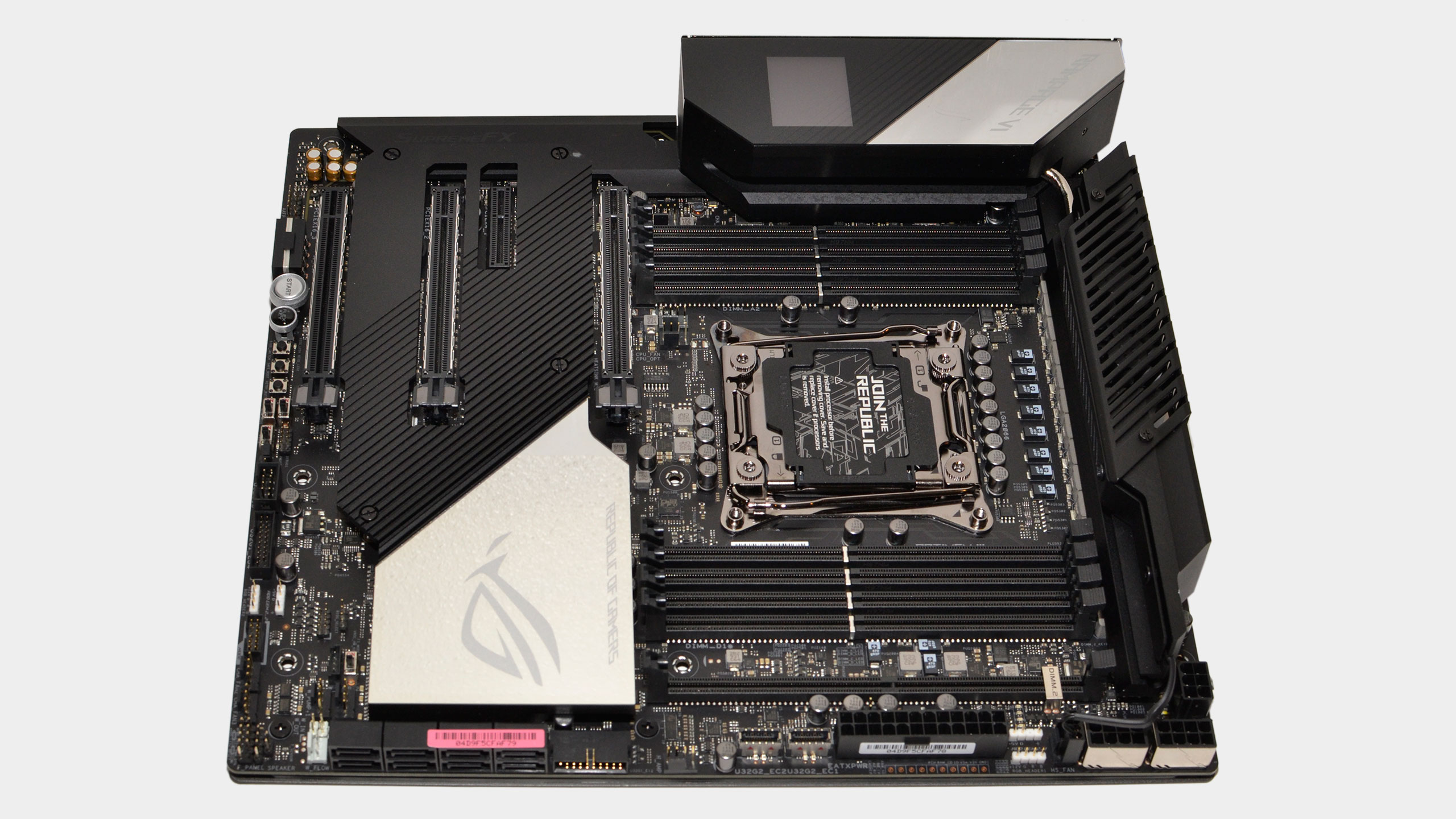
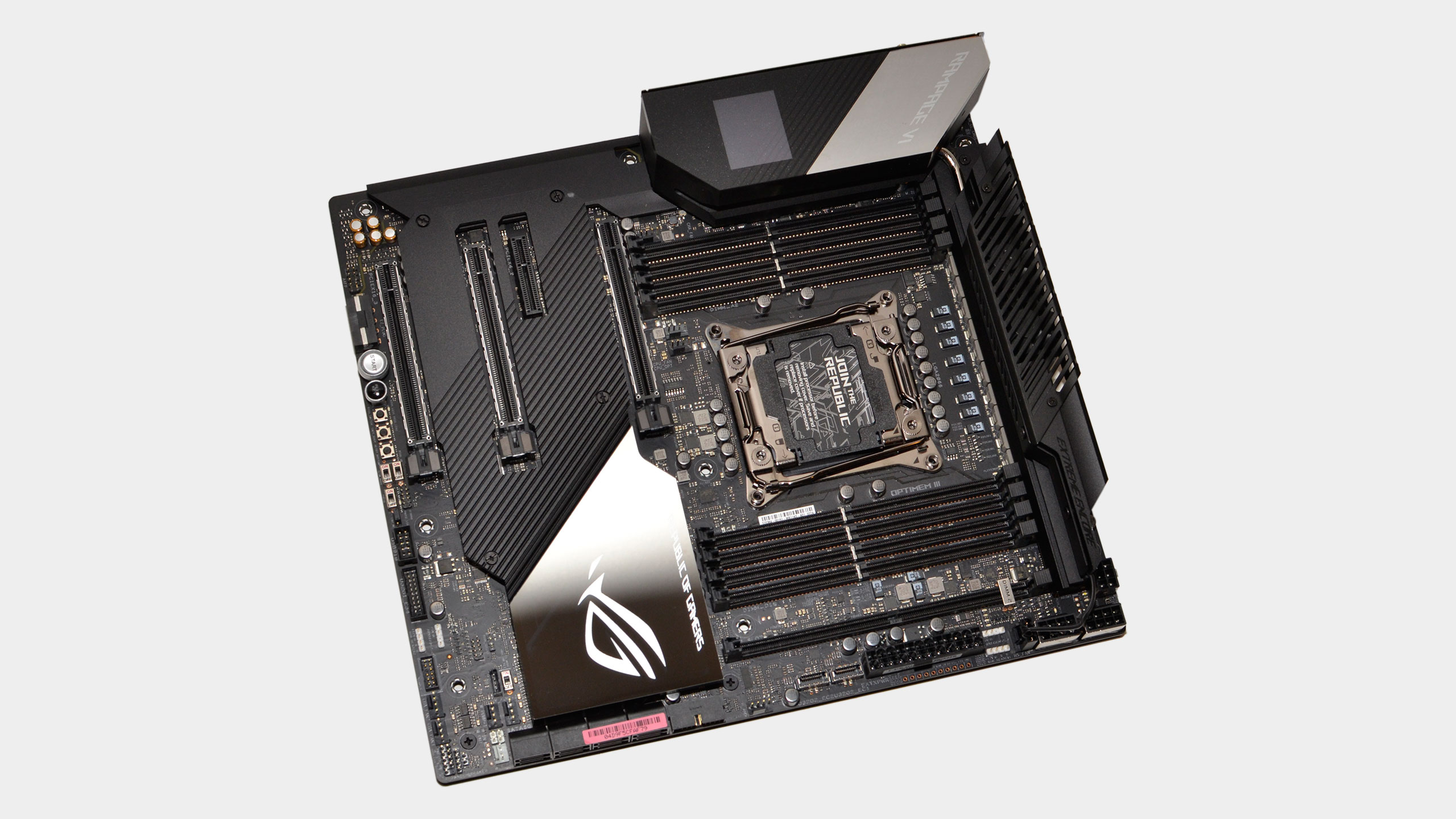
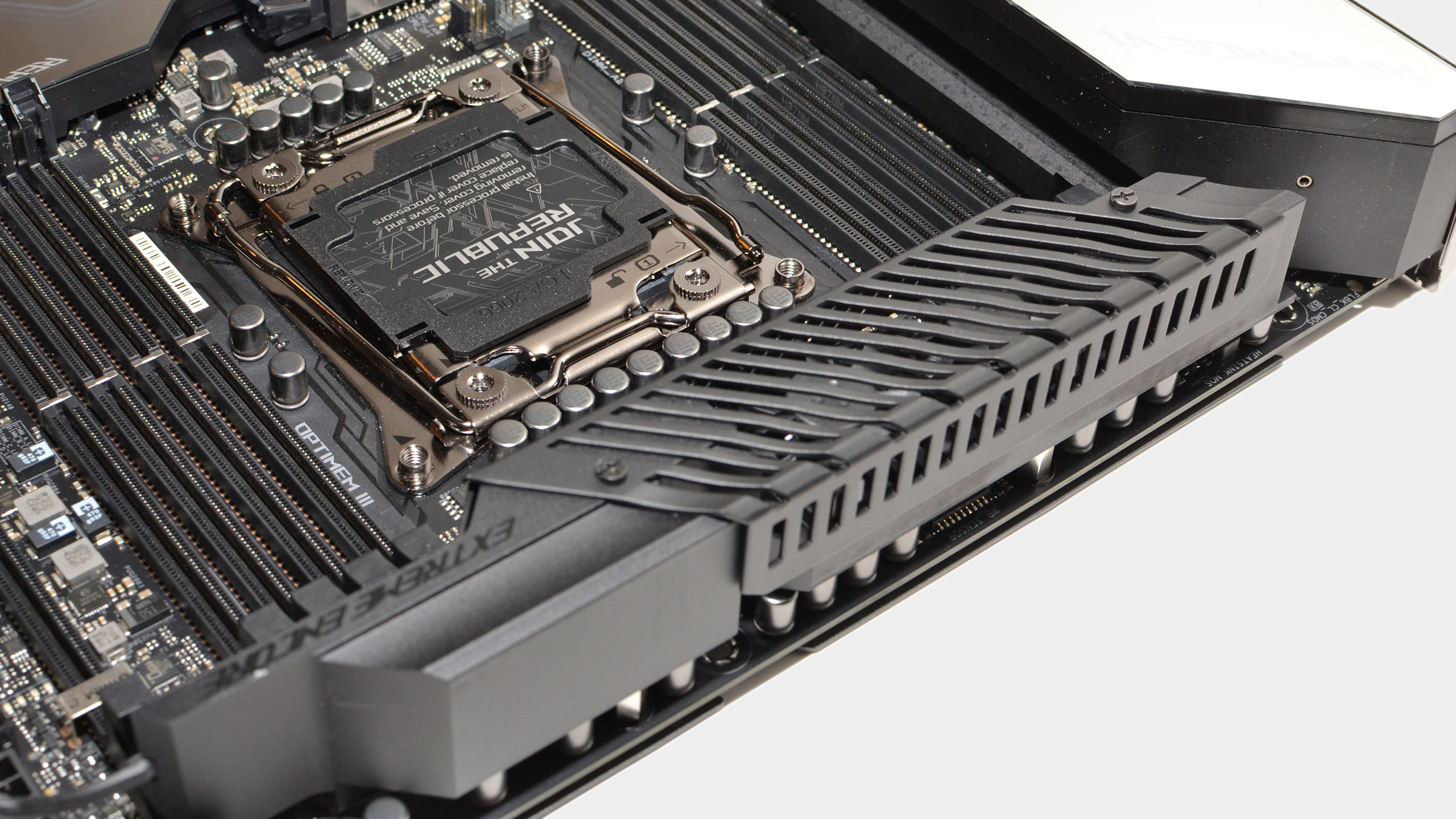



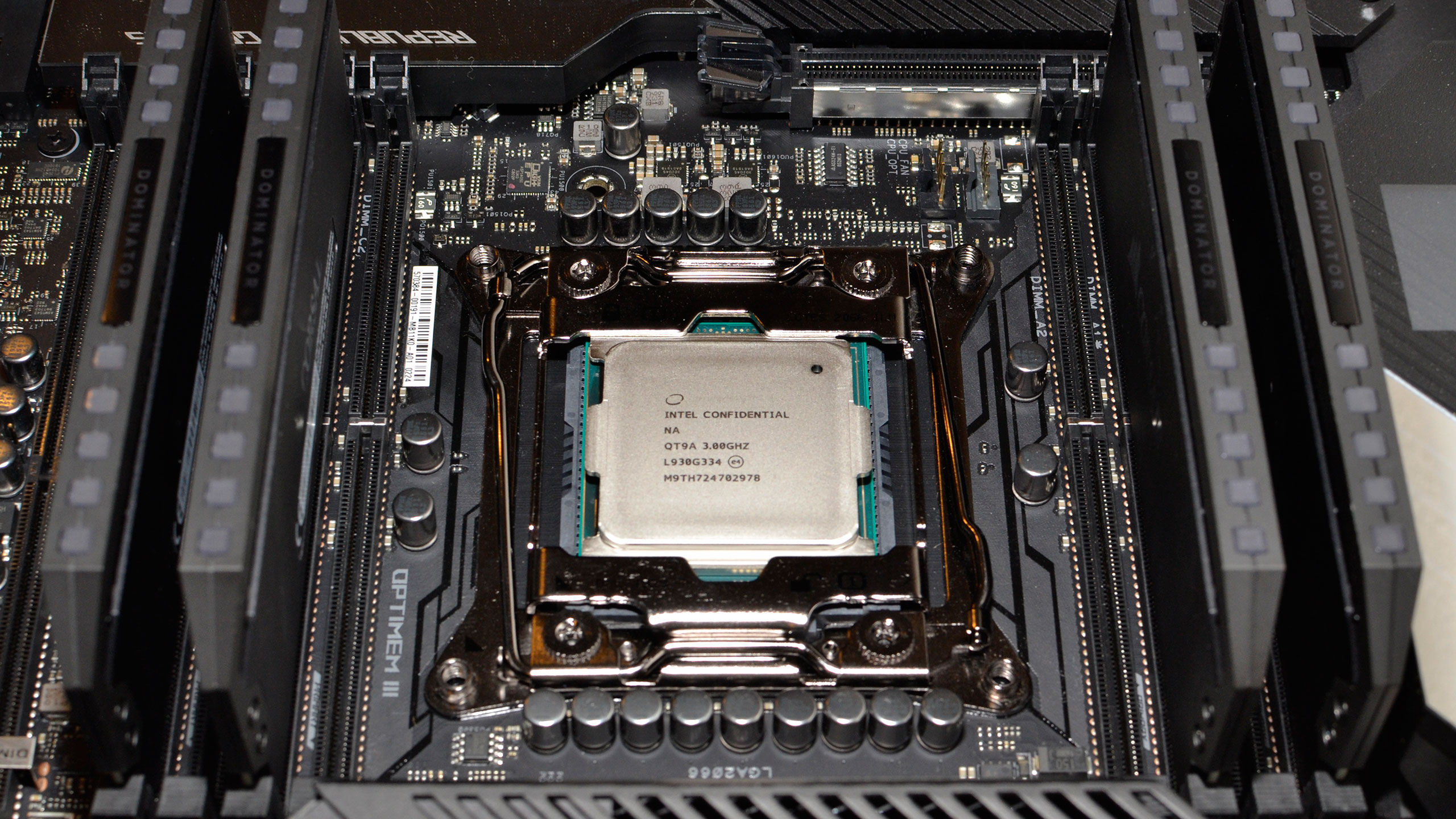
HEDT performance comparison
That brings me to the actual performance of the two platforms. I realize this is PC Gamer, and if a lot of the above feels like technobabble, that's because it is. HEDT platforms are often at the bleeding edge of technology, with buzzwords and jargon getting tossed around with wild abandon. There's a lot of cool stuff crammed into the latest CPUs, motherboards, graphics cards, etc. but for a lot of folks, the thing that really matters is performance.
Intel's X299 platform and CPUs, and even more so AMD's Threadripper and TRX40 platform, are for professional applications. AMD for example provided Blur studios with early Threadripper 3000 series PCs for its work on Terminator Dark Fate. 3D rendering applications are pretty much the ideal scenario for scaling up to a 32-core/64-thread processor or beyond. Games? Not so much—unless you're playing games while simultaneously doing 3D rendering and livestream encoding on the CPU in the background. So let's start with the 3D rendering applications:
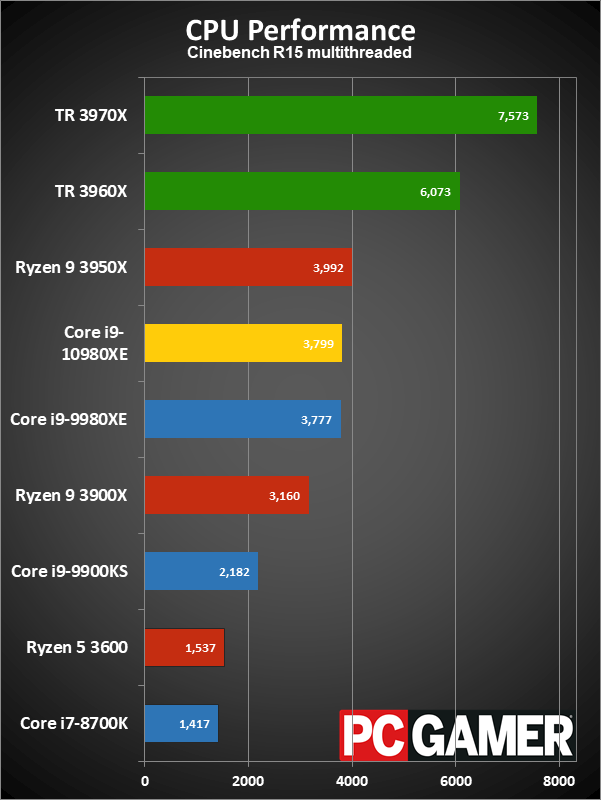

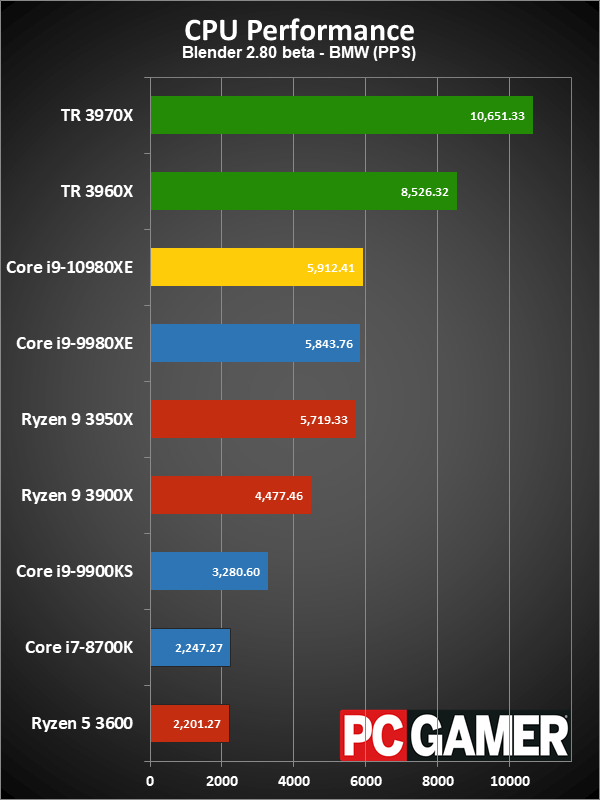
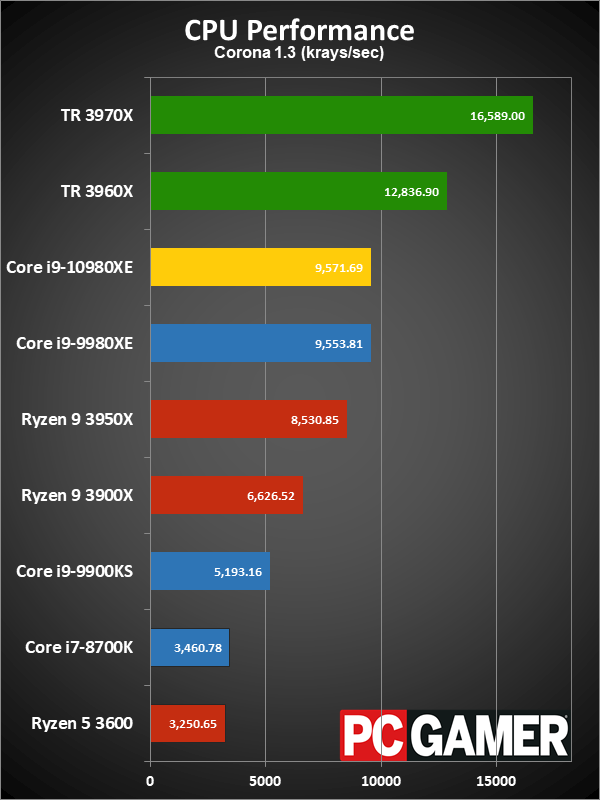
Regardless of which benchmark you want to look at, Threadripper absolutely crushes the competition in 3D rendering multithreaded performance. The 3970X is twice as fast as the 10980XE in Cinebench, 80 percent faster in Blender, 73 percent faster in Corona, and 57 percent faster in POV-Ray. With almost twice as many cores, Threadripper 3970X easily beats Intel's 10980XE in this type of workload. But there are other use cases as well.
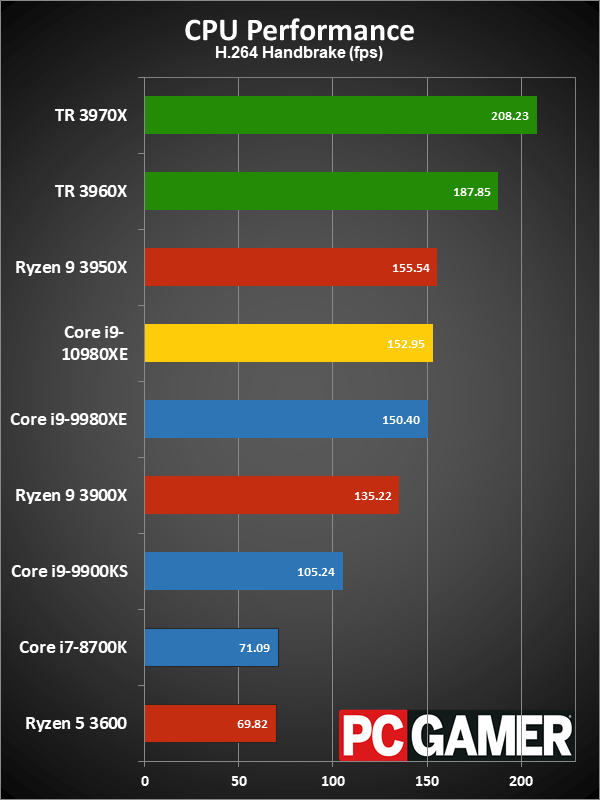

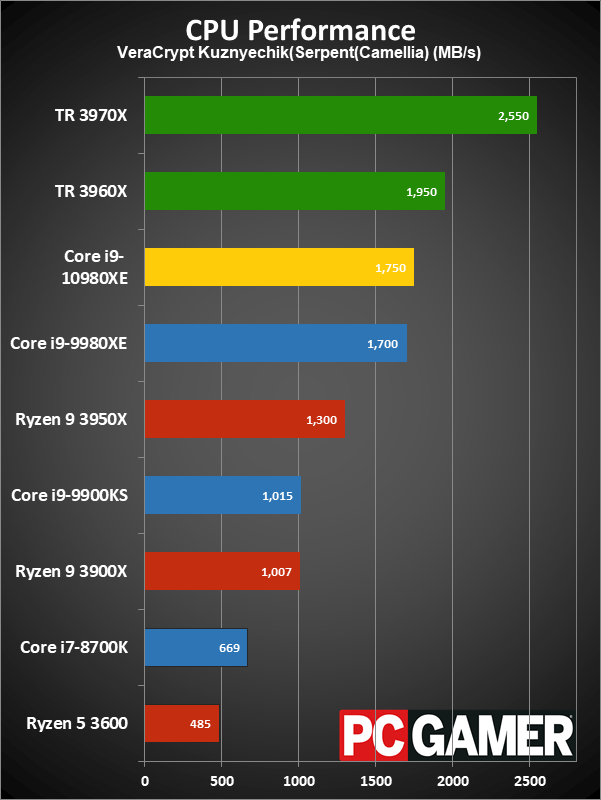

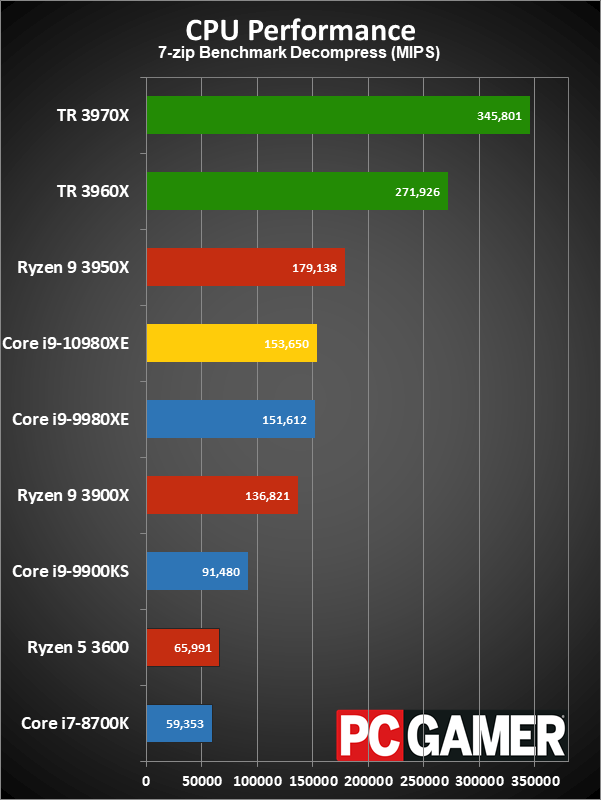
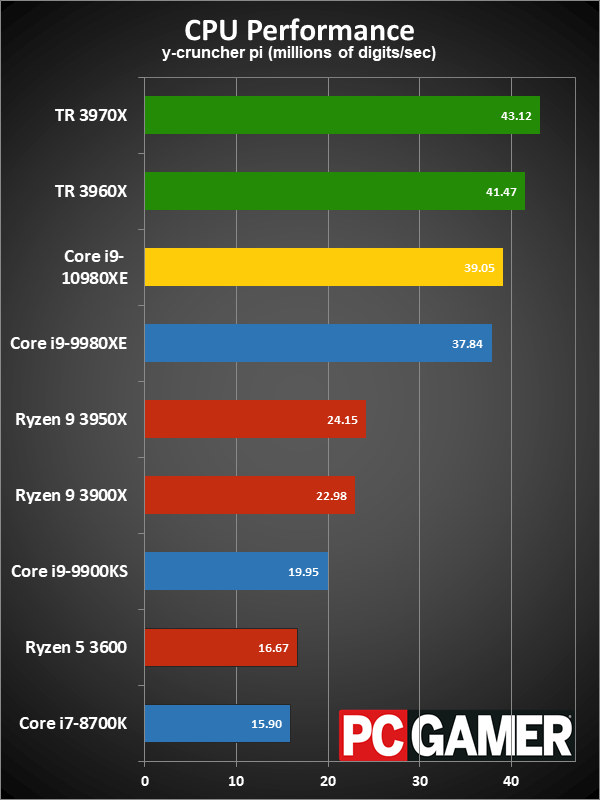
Not every application will scale perfectly with additional CPU cores, but Threadripper can encode high quality H.264 videos at over 200 fps. Even the demanding H.265 codec still easily clears the 60 fps hurdle required for real-time encoding, though 4K encoding is another story. Complex encryption also puts the 3970X nearly 50 percent ahead of the 10980XE, and the 7-zip decompression test is over twice the throughput.
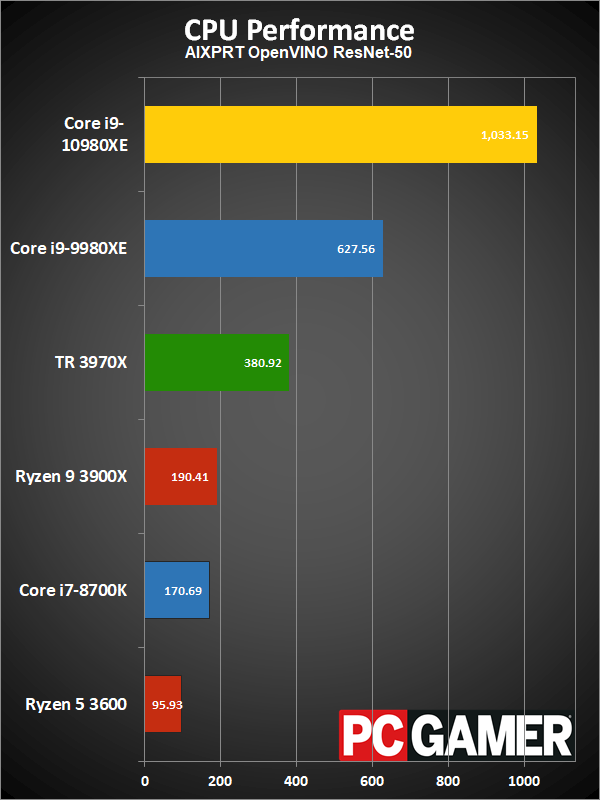
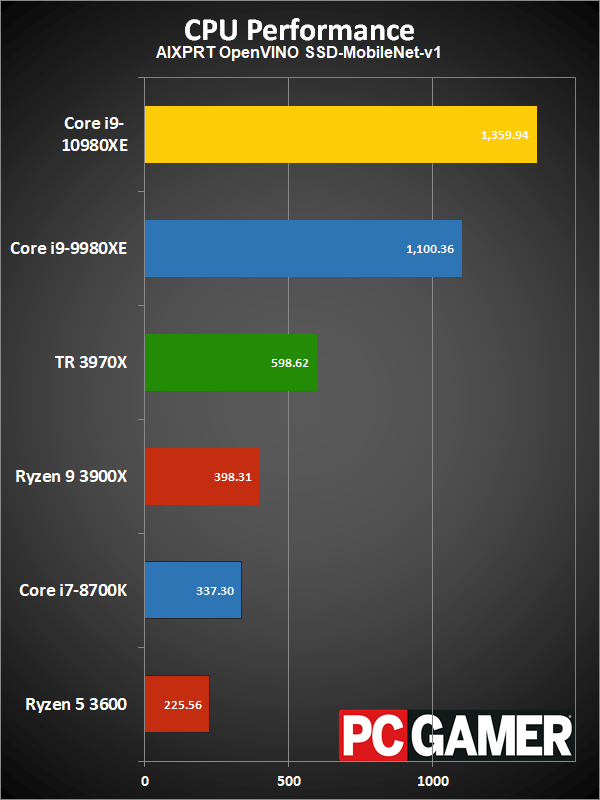
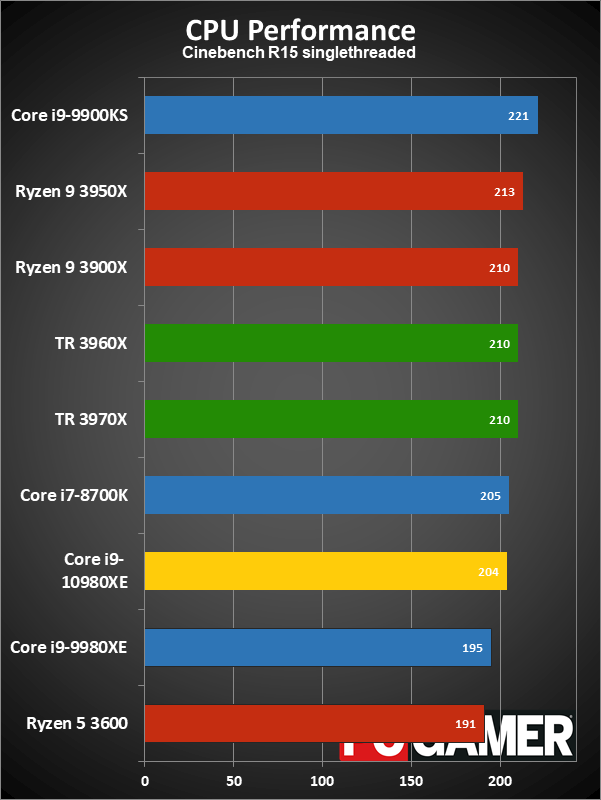
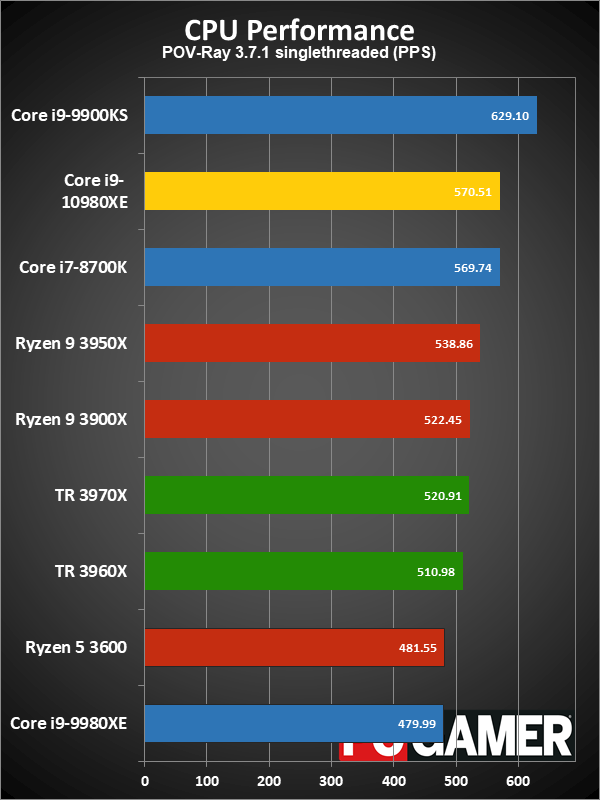
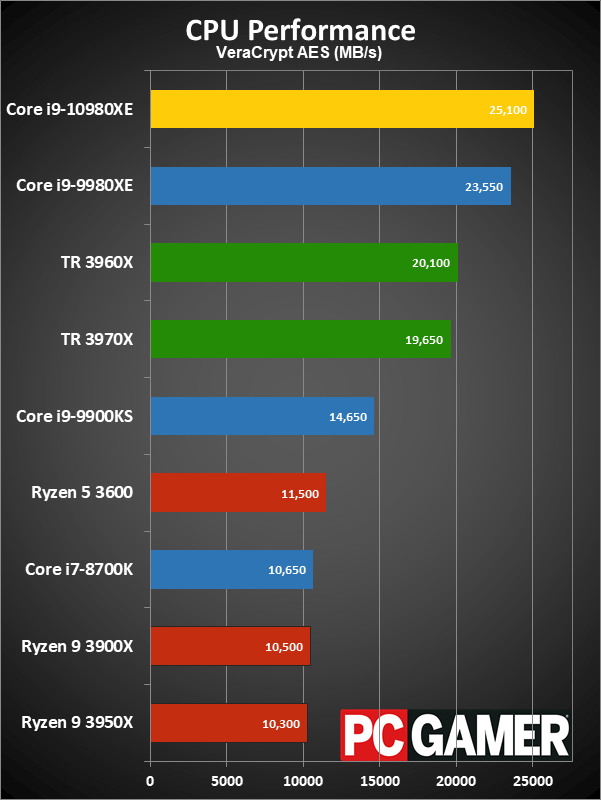
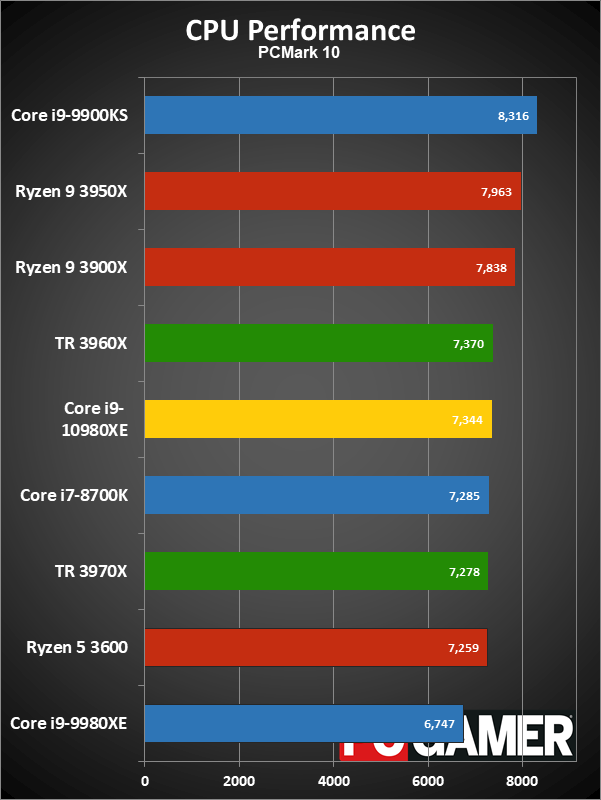
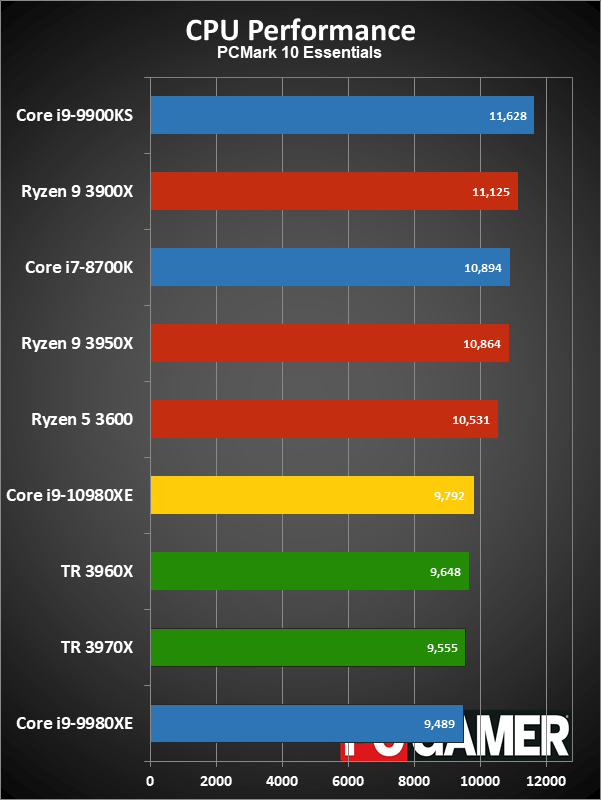
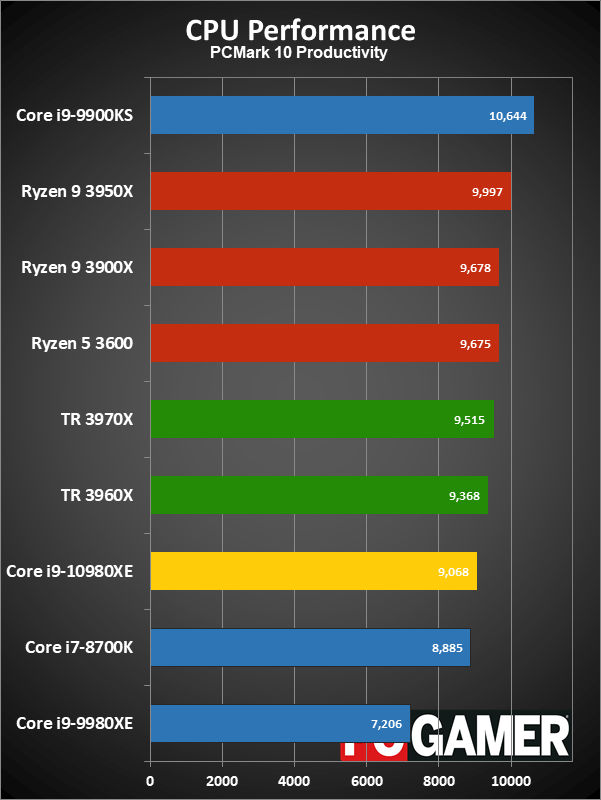

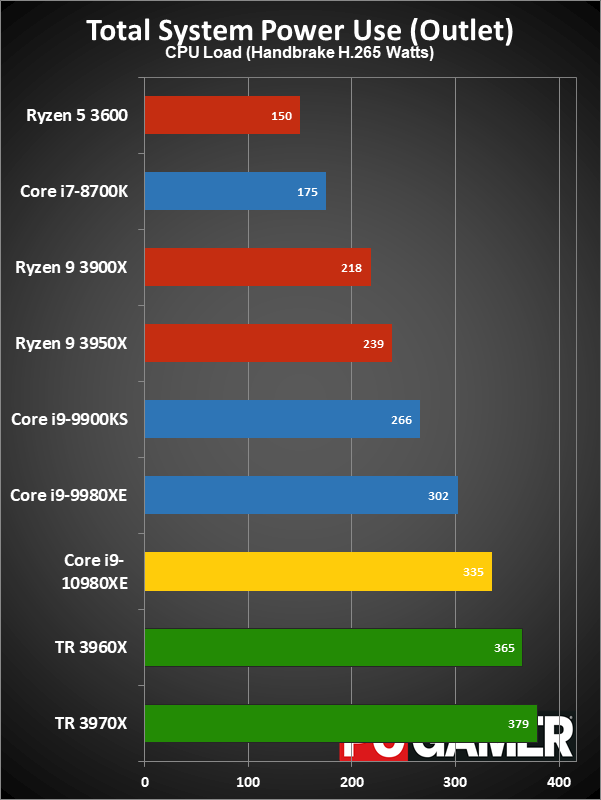
It's not all Threadripper all the time, however. I ran the recently released AIXPRT test suite, showing the ResNet-50 and SSD-MobileNet performance. This is one of the few benchmarks to currently support Intel's DL Boost instructions, and the result is a reversal of fortunes with Intel's 10980XE taking the top spot. How meaningful these wins are in the wider context of CPUs is a bit more difficult to nail down, especially when a lot of deep learning calculations are currently being run on GPU hardware, but DL Boost does have potential uses.
Everything else ranges from showing slightly better performance with the extreme CPUs to somewhat worse performance. There are many tasks where Threadripper and 10980XE don't have any real advantage over mainstream processors like the 9900K or 3900X. That's because CPUs have hit the point of diminishing returns, where figuring out how to break work up into potentially 64 or more independent pieces isn't just difficult, it's sometimes not possible. Games for example are a prime example where all the extra cores and threads found on HEDT parts don't help.
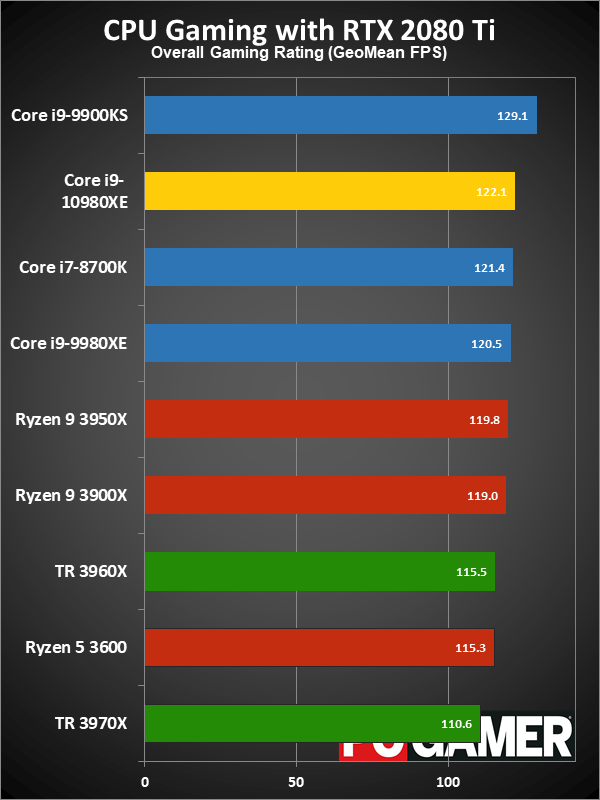
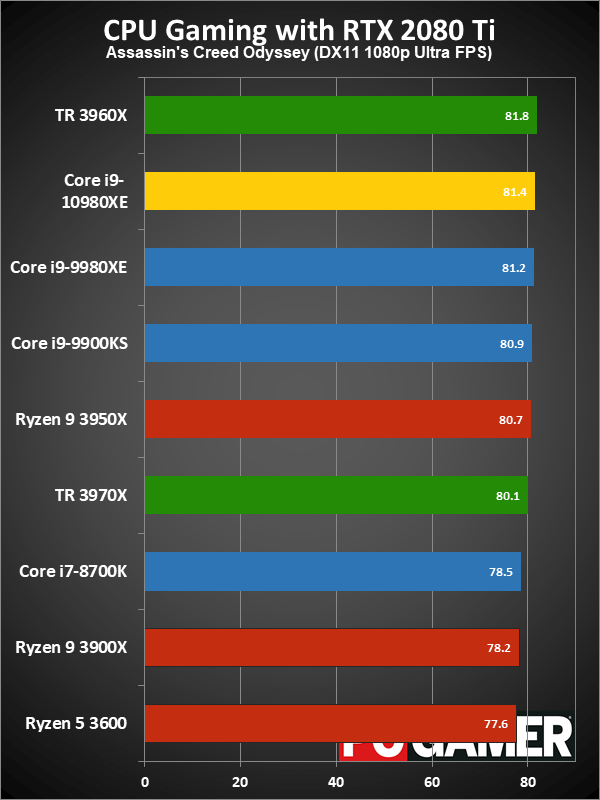
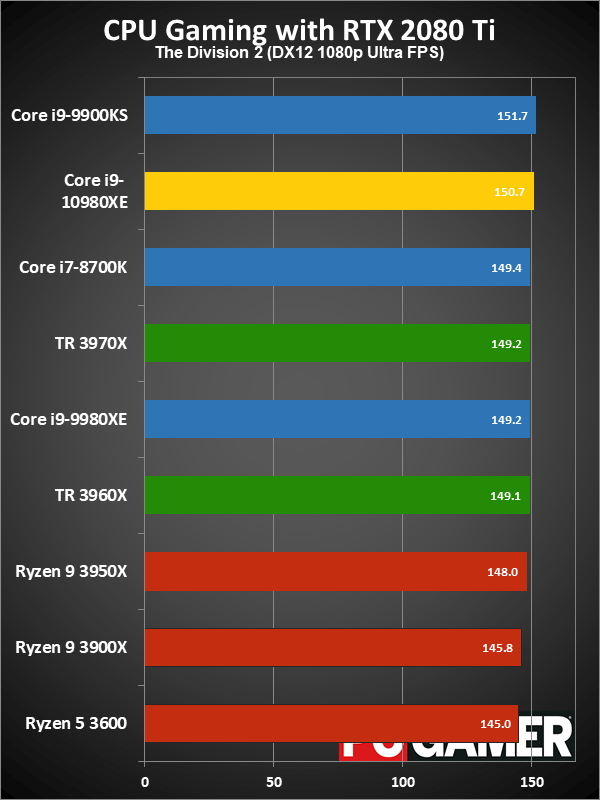
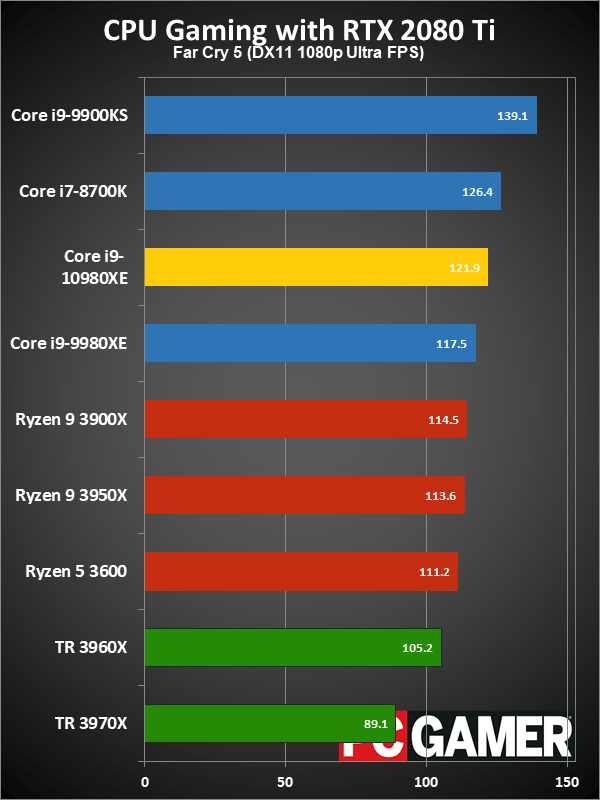
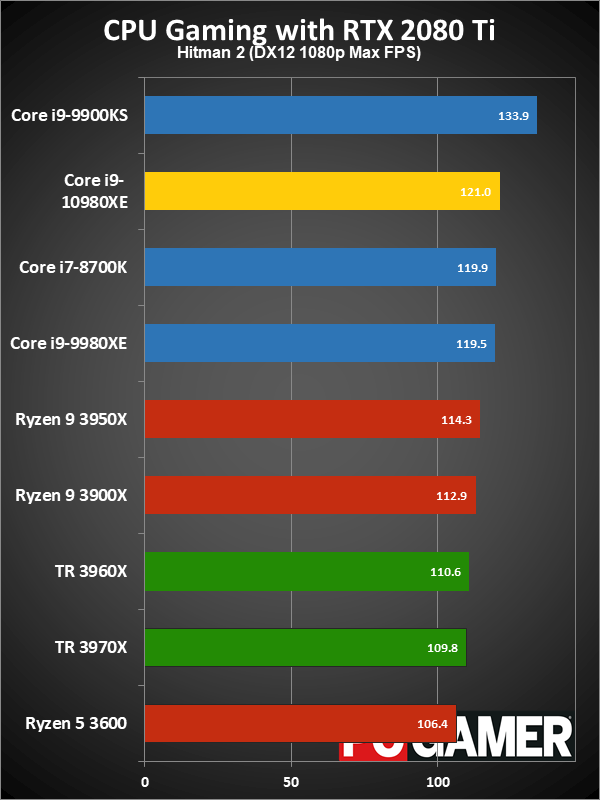


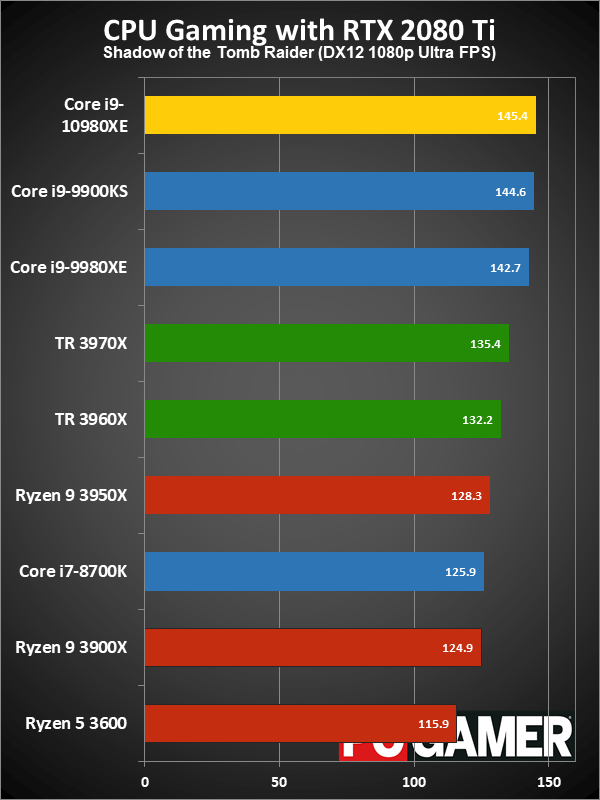
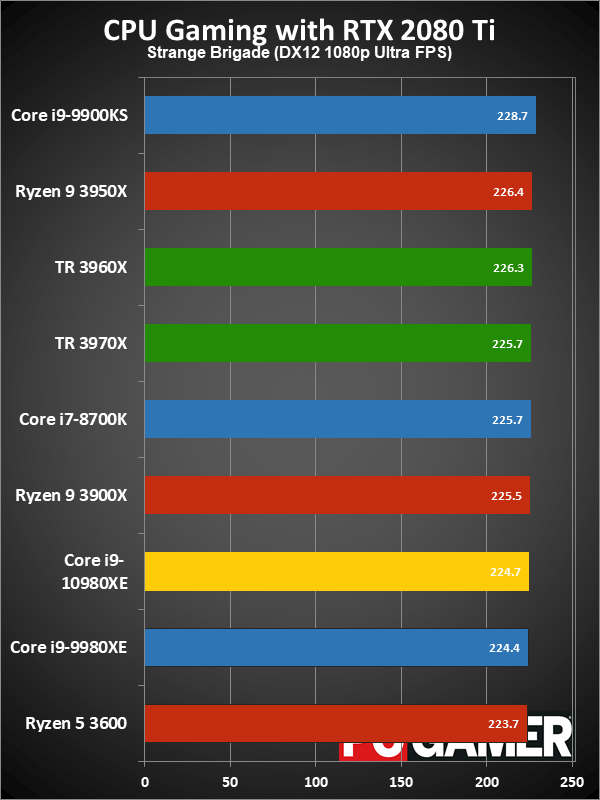

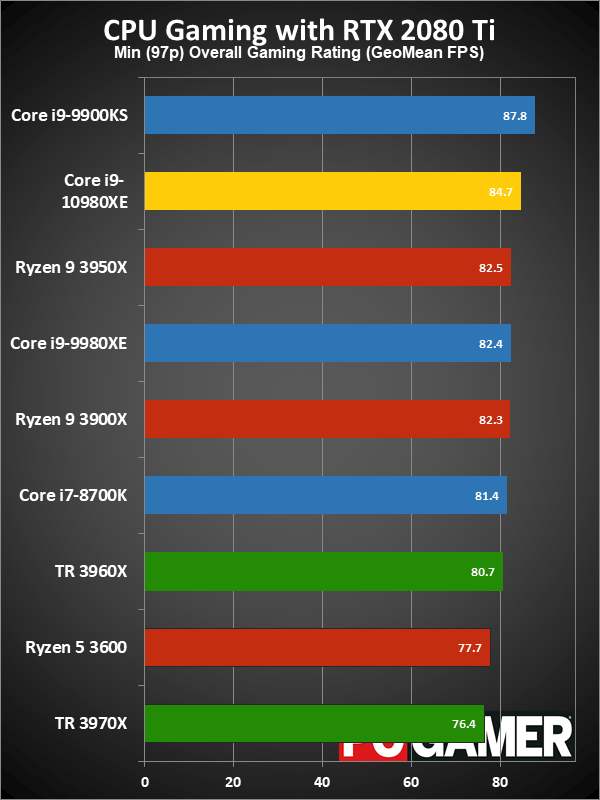
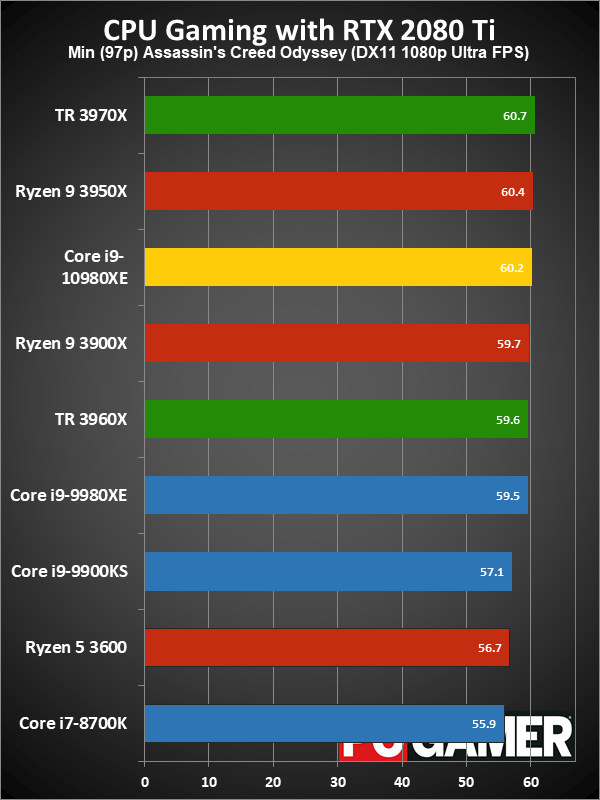
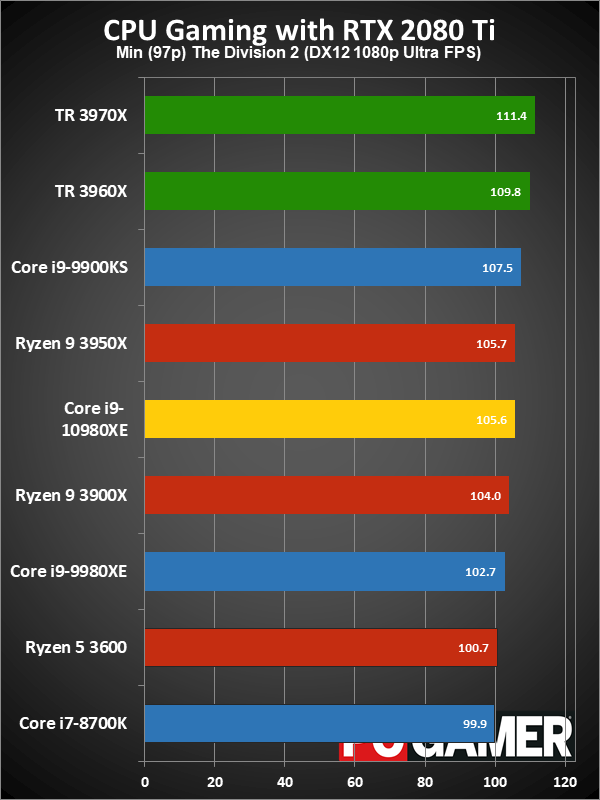
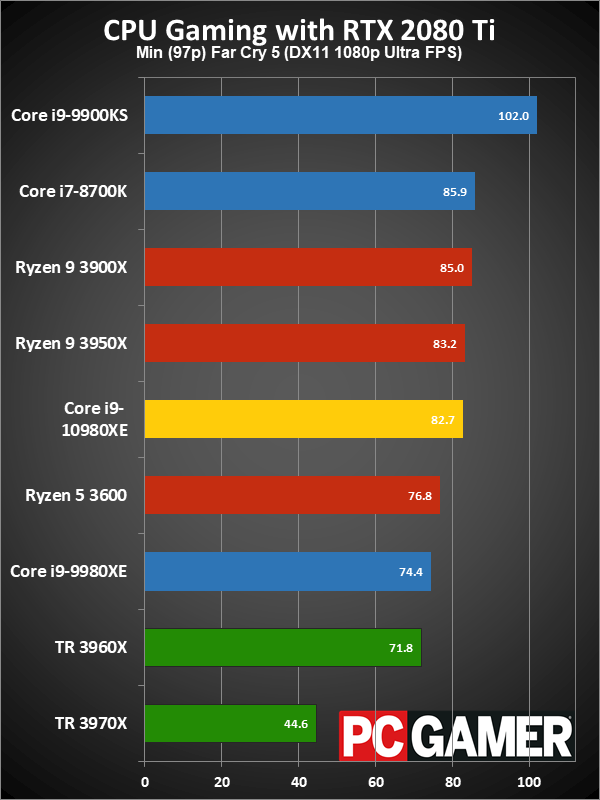
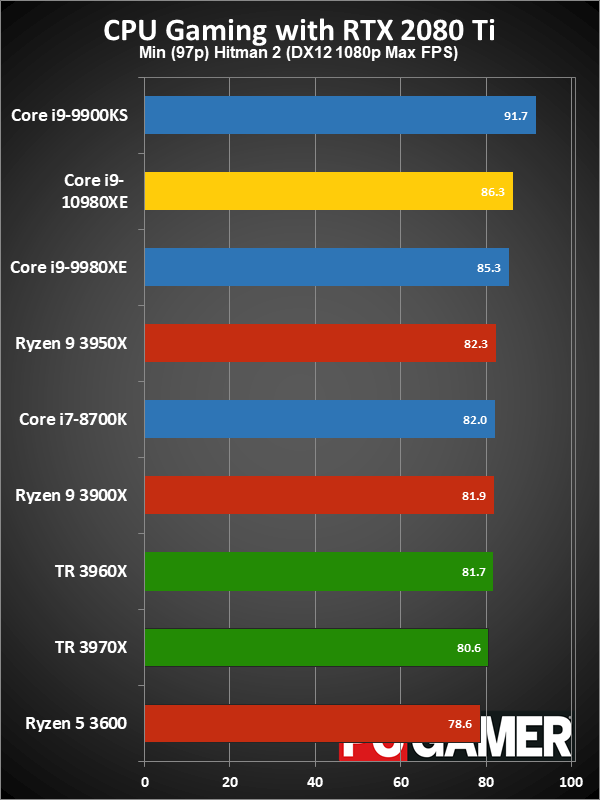


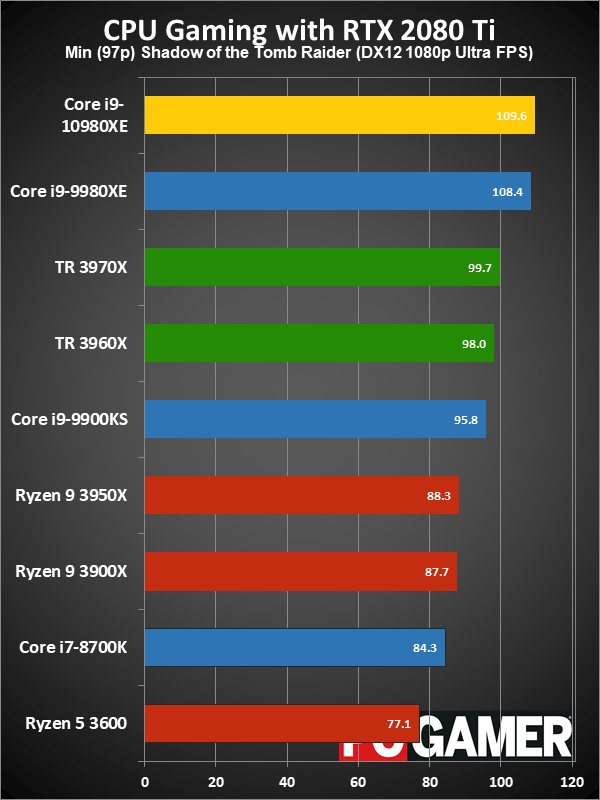
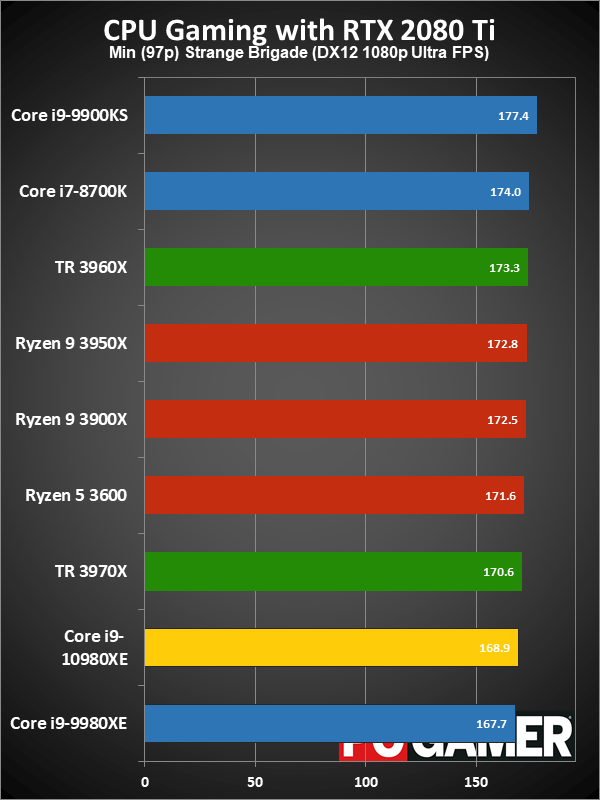

HEDT gaming performance
None of the games I've tested really benefit when going beyond an 8-core CPU—maybe 12-core at the outside. It's possible future games will do better, but we're a long way off from 32-core CPUs being even remotely mainstream. There are even a few games where the cornucopia of cores causes problems. Too much of a good thing, or perhaps just code that isn't designed to properly use all of those resources.
Digging into the individual charts shows the reason for the low rankings of Threadripper. Far Cry 5, Metro Exodus, and Total War: Warhammer 2 show a serious drop off in performance on the 24-core and 32-core Threadrippers, with the 3970X doing worse in all three games. I'm not certain what's happening here, but it looks like too many threads getting spawned on different CPU cores in a non-optimal fashion. The fix is to enable Game Mode in AMD's Ryzen Master utility. That disables SMT (symmetric multi-threading, or two threads per core), and also disables half of the CPU cores. It turns your 3970X into a 16-core/16-thread CPU and brings performance up to the 3950X level—after rebooting.
Incidentally, I've retested the CPUs for these gaming charts. There were some oddities when I checked out the 3950X at launch, and the short summary is that a few games had updates that changed performance—reducing it in several cases. All of these results are now current, using Nvidia's latest 441.20 drivers with the latest Windows 10 1909 (November 2019) update installed.


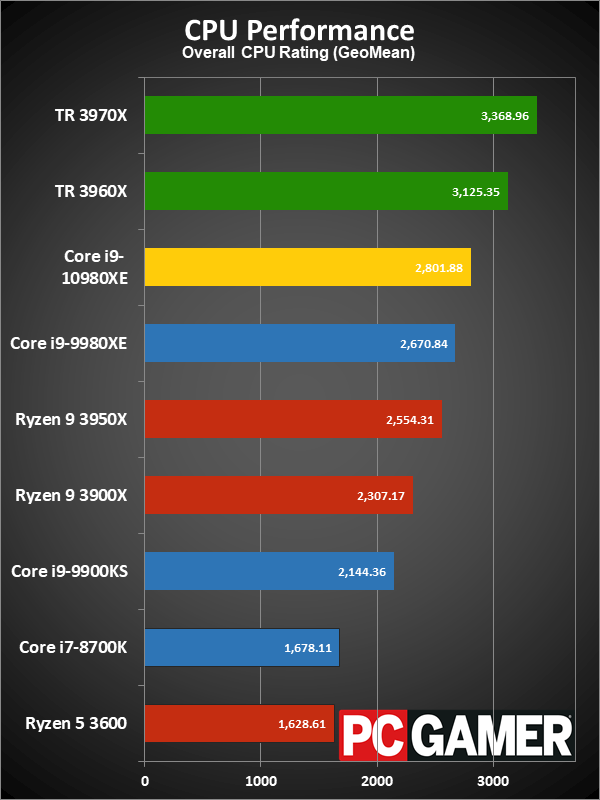


HEDT and the need for speed
These new HEDT parts end up with the top three spots on our CPU benchmark suite: Threadripper claims the gold and silver, with the 10980XE in third. That's partly because the suite is weighted toward multithreaded workloads, but that's precisely why these parts were created. Ten years ago, the fastest PCs had 4-core processors. Ten years before that, the only PCs that had more than a single CPU core were servers with multiple CPU sockets. What will our PCs look like 10 years from now? Today's Threadripper and Cascade Lake-X might seem tame.
With AMD's third generation Threadripper, the company effectively swaps places with Intel in the extreme PC market. Not everyone needs a 32-core monster CPU, but if you do, AMD is pretty much the only game in town worth watching. That's because AMD's Zen 2 parts are fabricated on a superior 7nm process, allowing for more cores, less power, and higher clockspeeds. Intel desperately needs to get 10nm desktop parts onto the market if it wants to compete, and by the time those arrive, maybe 7nm as well. In the meantime, the best it can do is to cut prices on its most expensive consumer parts.
Most PC users are going to be just fine with a 'puny' 8-core CPU for many years to come.
Just know that CPU cores are a bit like cylinders in combustion engines. Four cylinders is the de facto standard; six and eight cylinders are common in minivans and trucks; and 10- and 12-cylinder solutions exist, along with other exotic options like massive diesel engines, racing engines, and other specialized solutions. But do any of us want a car with an engine like that? Perhaps, but it's super niche—I ditched my 6-cylinder car five years ago because I wanted better gas mileage and haven't regretted it. As awesome as it can be to watch a gigantic bulldozer at work, I don't want one in my driveway, and most PC users are going to be just fine with a 'puny' 8-core CPU for many years to come.
It might be a decade or more before mainstream platforms get 32-core processors at reasonable prices. Threadripper 3970X is so far ahead of what most people need right now, or even what software can handle. Intel kept selling 4-core/8-thread as their top consumer CPUs for too long, but there's a real case of diminishing returns as you add more CPU cores. Doubling down and going to an 8-core CPU has clear benefits. Doubling again and jumping to a 16-core chip, the benefits become less obvious. Doubling a third time to hit 32 cores, and then again to 64 cores? Yeah, that's a tough sell, even for a technology enthusiast.
I remember thinking the same about 8-core processors five years ago, yet today I wouldn't want to buy a new PC without at least a Ryzen 7 3700X or Core i7-9700K. Check back in another five or ten years and I'm sure I'll have changed my tune again, fully embracing the need for 32-core CPUs and 256GB of RAM.
Jarred's love of computers dates back to the dark ages when his dad brought home a DOS 2.3 PC and he left his C-64 behind. He eventually built his first custom PC in 1990 with a 286 12MHz, only to discover it was already woefully outdated when Wing Commander was released a few months later. He holds a BS in Computer Science from Brigham Young University and has been working as a tech journalist since 2004, writing for AnandTech, Maximum PC, and PC Gamer. From the first S3 Virge '3D decelerators' to today's GPUs, Jarred keeps up with all the latest graphics trends and is the one to ask about game performance.


